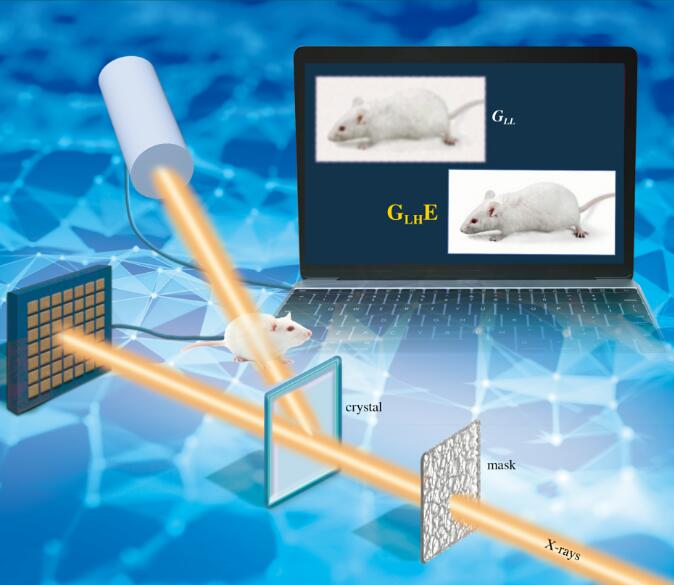SPECIAL TOPIC—Recent advances in hardware, algorithms and software of quantum computers
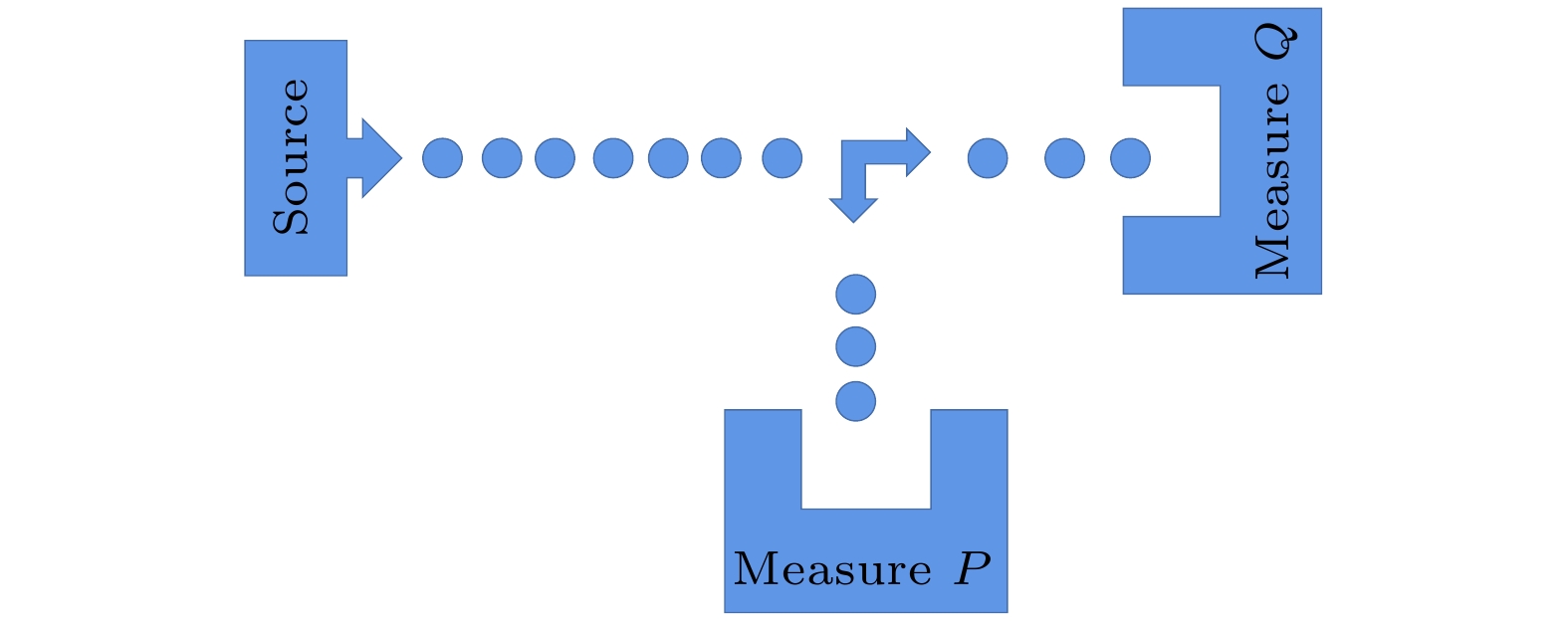
EDITOR'S SUGGESTION
2022, 71 (7): 070302.
doi: 10.7498/aps.71.20212197
Abstract +
The Heisenberg uncertainty principle is one of the characteristics of quantum mechanics. With the vigorous development of quantum information theory, uncertain relations have gradually played an important role in it. In particular, in order to solved the shortcomings of the concept in the initial formulation of the uncertainty principle, we brought entropy into the uncertainty relation, after that, the entropic uncertainty relation has exploited the advantages to the full in various applications. As we all know the entropic uncertainty relation has became the core element of the security analysis of almost all quantum cryptographic protocols. This review mainly introduces development history and latest progress of uncertain relations. After Heisenberg's argument that incompatible measurement results are impossible to predict, many scholars, inspired by this viewpoint, have made further relevant investigations. They combined the quantum correlation between the observable object and its environment, and carried out various generalizations of the uncertainty relation to obtain more general formulas. In addition, it also focuses on the entropy uncertainty relationship and quantum-memory-assisted entropic uncertainty relation, and the dynamic characteristics of uncertainty in some physical systems. Finally, various applications of the entropy uncertainty relationship in the field of quantum information are discussed, from randomnesss to wave-particle duality to quantum key distribution.

EDITOR'S SUGGESTION
2022, 71 (7): 070305.
doi: 10.7498/aps.71.20212245
Abstract +
One of the most important applications of quantum computing is to crack classical cryptosystem. Previous studies showed that the number of qubits required to crack the widely used 2048-bit RSA cipher is about 20 million, which is far beyond the current technology for quantum computing. Recently, É. Gouzien and N. Sangouard of the French Alternative Energies and Atomic Energy Commission proposed a quantum computing architecture based on a two-dimensional grid of superconducting qubits and a three-dimensional multimode quantum memory. They showed that only 13k qubits are required to crack a 2048-bit RSA integer with the help of a long-lived quantum memory with 28 million spatial modes and 45 temporal modes. Their results clearly demonstrate the values of quantum memories in quantum computing and provide an alternative approach for building practically useful quantum computers. Quantum computers require quantum memories to work at microwave band, which remains an outstanding challenge. Based on a detailed analysis of atomic radiations during the quantum storage process, we recently proposed a noiseless-photon-echo protocol which can successfully eliminate the spontaneous emission noise in photon echoes. This protocol is expected to further enable microwave quantum storage and the construction of “quantum memory” quantum computers.
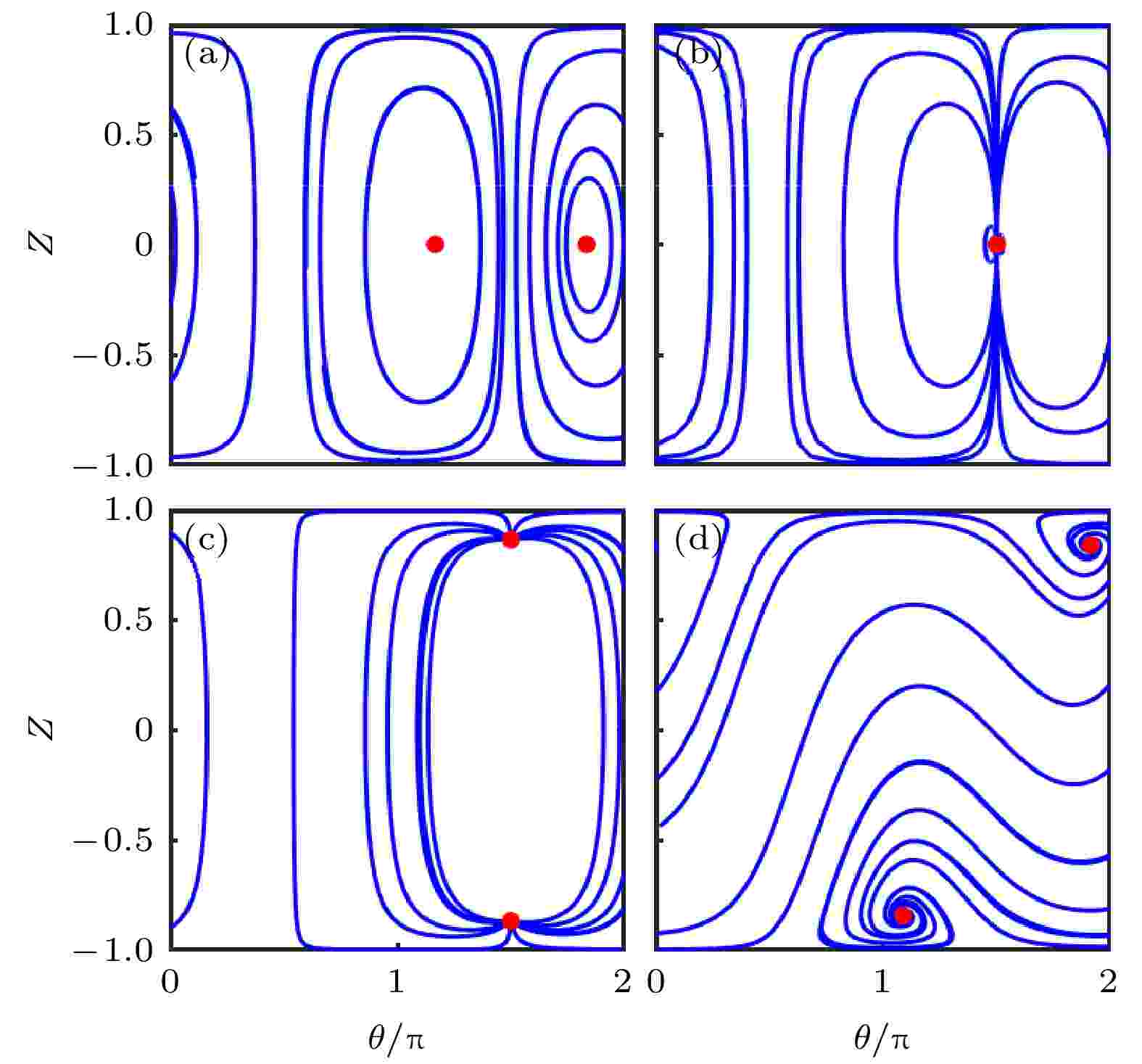
EDITOR'S SUGGESTION
2022, 71 (7): 074207.
doi: 10.7498/aps.70.20220270
Abstract +
GENERAL
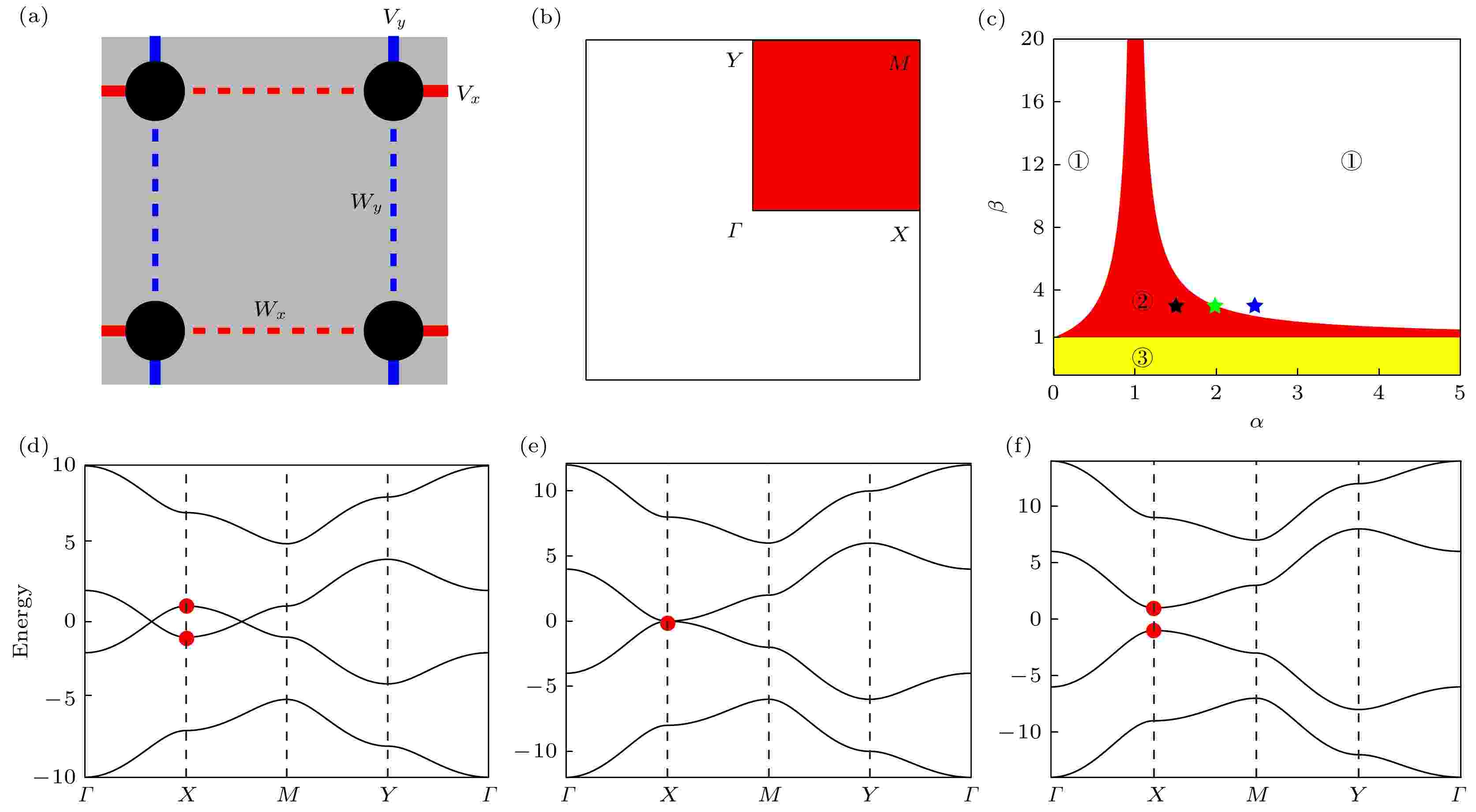
2022, 71 (7): 070201.
doi: 10.7498/aps.71.20211967
Abstract +

2022, 71 (7): 070301.
doi: 10.7498/aps.71.20211453
Abstract +
The quantum nonlocal correlation of quantum states plays an important role in the quantum information and quantum computing protocols. However, during the transmission of entangled states in the quantum channel, they will inevitably interact with the environment, resulting in the degradation of the coherence and then weakening the quantum nonlocal correlation. Using a high probability quantum nonlocal correlation testing scheme based on Hardy-type paradox, in this paper we investigate the quantum nonlocal correlation testing of two-qubit polarization entangled states when they transmit through amplitude damping channel (ADC), phase damping channel (PDC) and depolarization damping channel (DC). The results show that DC has a great influence on the quantum nonlocal correlation testing, while PDC has little influence on the quantum nonlocal correlation testing of quantum states. Finally, this paper also gives condition for the successful quantum nonlocal correlation testing of ADC under weak measurement and quantum weak measurement reversal operation. The results show that when the intensity of weak measurement increases, the influence of ADC decoherence effect on quantum nonlocal correlation testing can be effectively reduced.
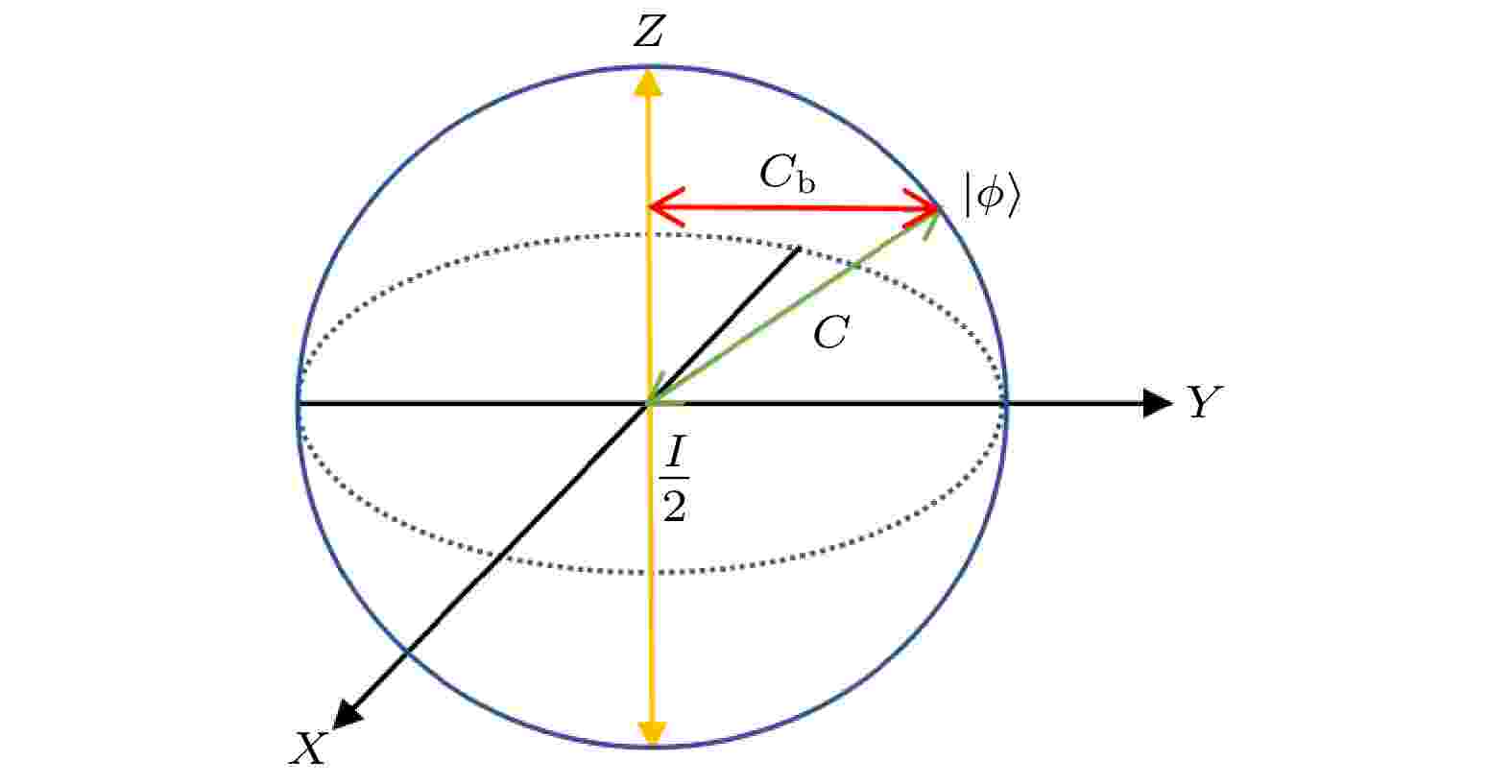
2022, 71 (7): 070303.
doi: 10.7498/aps.71.20212067
Abstract +
In order to study the decoherence process of quantum system and find the ways to delay it, in this paper we investigate the decoherence process under correlated depolarizing channels by calculating the evolution of norm coherence, relative entropy coherence and basis-independent coherence of the three initial states: special initial state, maximum coherent state and isotropic state. From the analytic results, numerical results and evolution images, it can be found that 1) completely correlated channels can suppress decoherence to a greatest extent,. 2) the time point at which maximum decoherence occurs is irrelevant to the degree of correlation, but system’s decoherence evolution behavior depends on it. 3)the correlation of depolarizing channels can reinforce the collective quantum coherence between subsystems, and an inequality relation of basis-independent coherence is proved in this system.
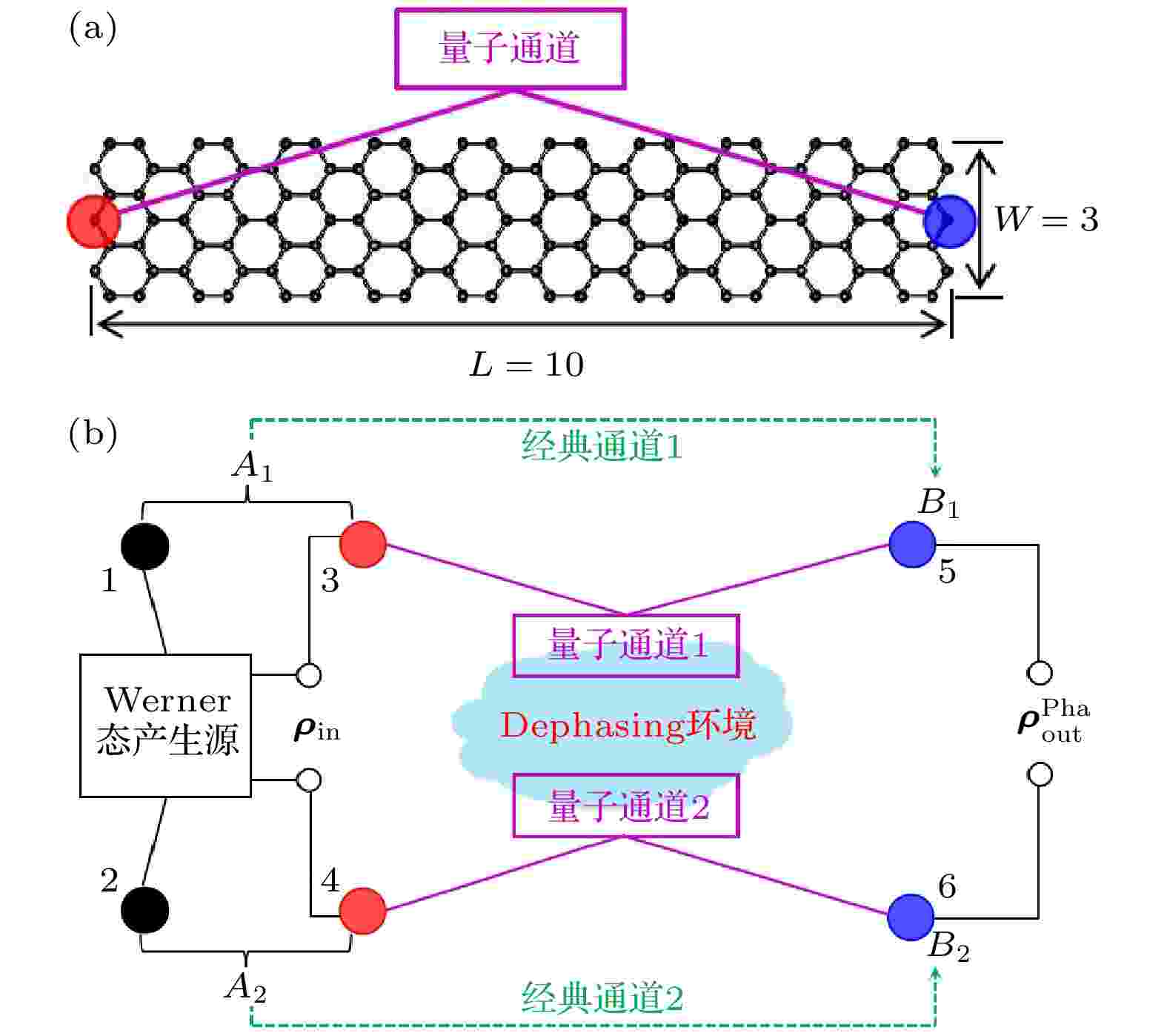
2022, 71 (7): 070304.
doi: 10.7498/aps.71.20211881
Abstract +
The teleportation of Werner state in the graphene-based quantum channels under the dephasing environment is studied through the effective low-energy theory in this paper. The results show that the output entanglement normally reaches a higher level as the input entanglement increases, while the performance of the corresponding fidelity is opposite. Given the input state, the greater entanglement in the quantum channel can provide the higher-quality output state. For graphene-based quantum channels, the low temperature and weak Coulomb repulsive potential can decelerate the attenuation of entanglement resources in the dephasing environment. Moreover, when the temperature is lower than 40 K and the coulomb repulsive potential between electrons is less than 6 eV, the average fidelity of the output state reaches more than 80%. These results indicate that graphene has potential applications in quantum information.
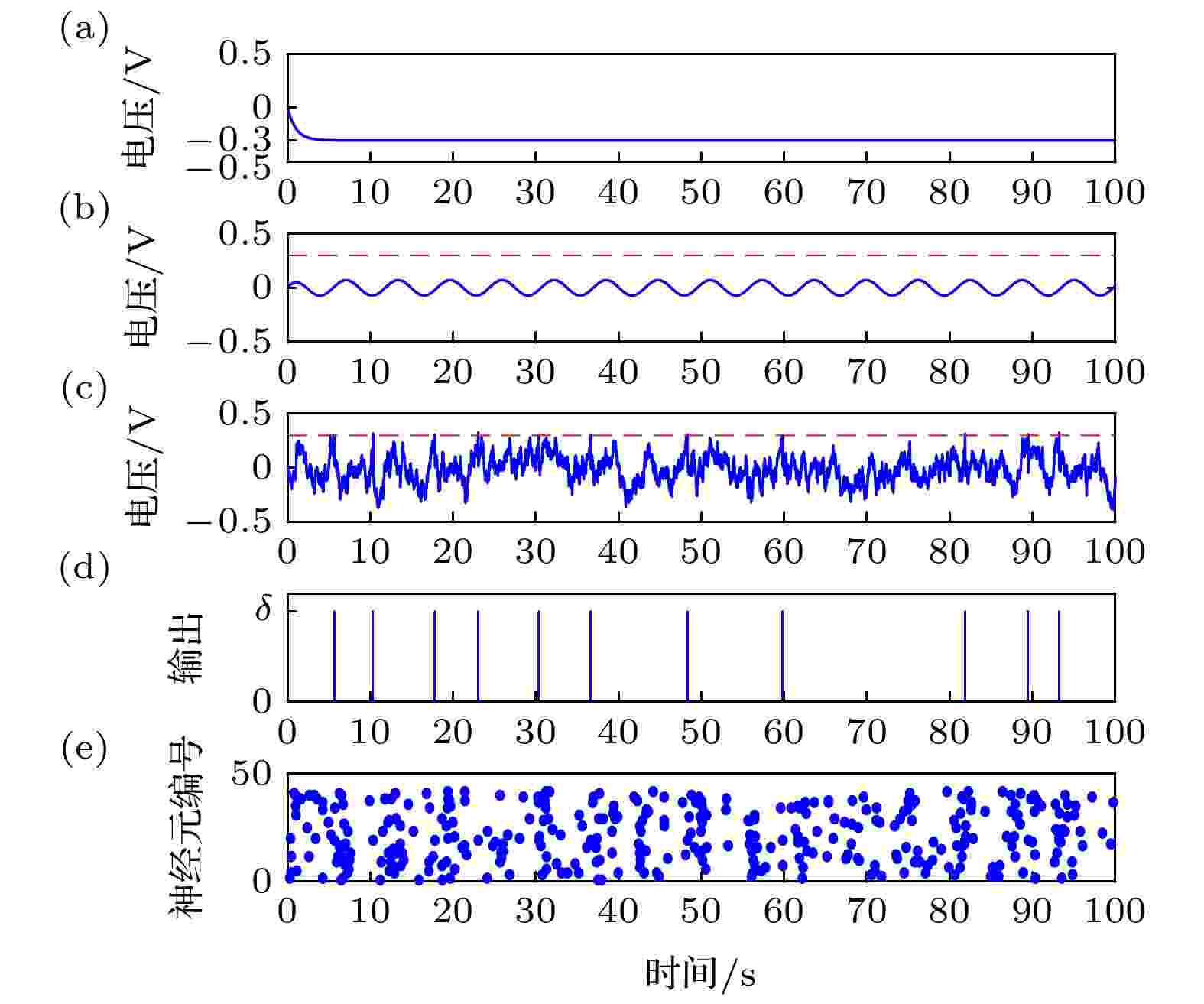
2022, 71 (7): 070501.
doi: 10.7498/aps.71.20211982
Abstract +
Our aim is to present an interpretable algorithm for enhancing low-illuminance color image based on the principle of stochastic resonance and the fundamental biophysical process of human brain perceiving object color. To this end, the phenomenon of stochastic resonance in a conductance-based integrate-and-fire neuronal network is first explored, with the effect of firing threshold, synaptic weight and the population size on the signal-to-noise ratio revealed, and the firing threshold is recognized as the key parameter for the resonance effects. And then, a color image enhancement algorithm, where the peak signal-to-noise ratio and the natural image quality evaluator are adopted as quantifying indexes, is developed by combining the stochastic spiking neuronal network and the involved biophysical process relating to visual perception. Note that the enhanced image is aperiodic, thus in order to optimize the performance of the algorithm, an illuminance distribution based threshold strategy is given by us for the first time. The numerical tests show that the algorithm has good enhancement performance and stability. We wish this algorithm could be applied to relevant signal processing fields such as military detection and medical image preprocessing.

2022, 71 (7): 070502.
doi: 10.7498/aps.71.20211537
Abstract +
Impatience is a psychological factor that varies from person to person and constantly changes with the environment in real time. In this paper, a model based on cellular automaton is presented to investigate the dynamics of bi-directional flow, with considering individual impatient behaviors. Potential field is defined to represent pedestrian’s interest in available space, which provides an approach to the description of proactive mechanism in bi-directional flow. By formulating the dynamics with controllable parameters, individual impatience level is measured, recorded and updated to trigger off the personalized behaviors. Three different patterns of impatient behaviors are modeled and compared with each other. Simulation results demonstrate the different performances of impatient behavior patterns. Comparing with the situation without considering impatience, bidirectional flow is improved in terms of speed, flow rate and waiting time when impatience level is used to triggers off the sidestep behavior. However, the collective performance shows a deterioration at a most density level when impatience is regarded as a direct parameter to estimate the priority to a target cell among several competitors. The parameter sensitivity analysis of impatience intensity and decision threshold shows the flexibility of the model to present the impatience effect. Simulation experiments under different scenarios also reveal the effects of low proportion of slower pedestrians, walkway width and mixed behavior mode on the efficiency of pedestrian counter flow.
NUCLEAR PHYSICS
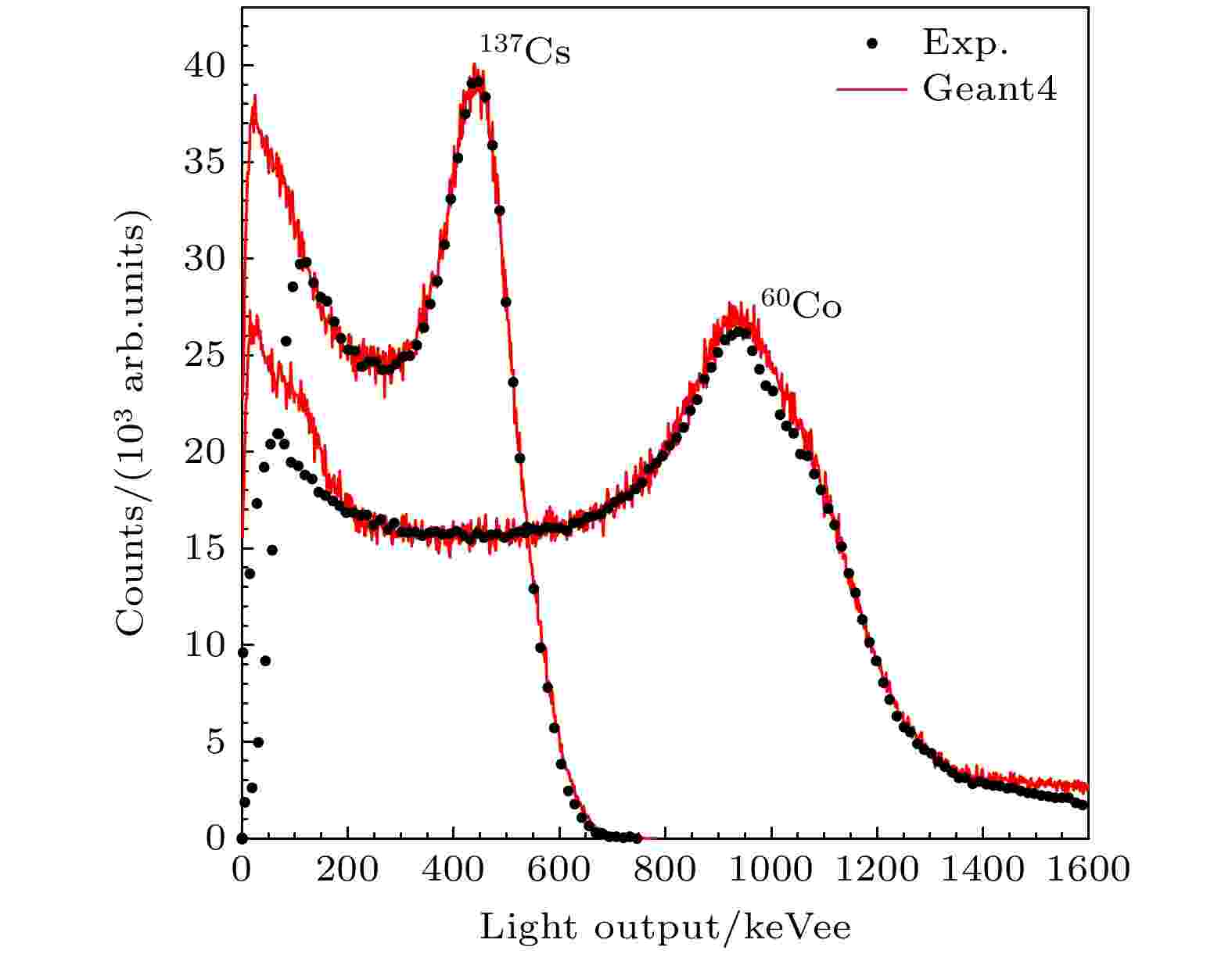
EDITOR'S SUGGESTION
2022, 71 (7): 072901.
doi: 10.7498/aps.71.20212051
Abstract +
The C6D6 detection system coupling with the pulse height weighting technique is widely used for experimentally measuring the neutron capture cross section. The thickness of sample used in the experiment directly affects the neutron beam time and the reliability of the experimental data. In the present work, we compare the lutetium (Lu) neutron capture reaction cross sections among the samles with different thickness, obtained by the C6D6 detection system of the back-streaming white neutron beam line at China spallation Neutron Source (CSNS back-n). The light response of the detection system is simulated with the consideration of the sample thickness by GEANT4 Monte Carlo simulation code. The 4th order polynomial pulse weight functions for different samples are determined by using the above light response function. In the experiment, the high precision capture yield distributions in the resonance energy region are obtained by measuring the longer flight distance and background. The experimental resonance parameters are deduced by analyzing the capture yield distribution with the R-matrix theory. The comparisons of the results of capture yield and the resonance parameters between the two groups show that the resonance curve of 1.06mm natLu sample changes due to its thickness effect, and there is a large difference between the experimental resonance parameters and ENDF/B-VIII.0 database. However, the experimental results of 0.207mm natLu sample can well accord with the ENDF/B-VIII. 0 data.
ATOMIC AND MOLECULAR PHYSICS

EDITOR'S SUGGESTION
2022, 71 (7): 073201.
doi: 10.7498/aps.71.20212146
Abstract +
A scheme of the large frequency shift for high-order harmonic generation (HHG) produced by atomic gas driven by an asymmetric laser pulse is proposed in the tunneling ionization regime. By numerically solving the three-dimensional time-dependent Schrodinger equation in the dipole approximation, we theoretically investigate the characteristics of HHG emitted from hydrogen atom driven by the laser pulse with different rising and falling times. Our results show that the HHG spectra of atomic H in cutoff region present a strong redshift and blueshift. The shift can be adjusted by varying the rising time or falling time of the laser pulse. The time frequency analysis, reveals that the reason for the frequency shift comes from different contributions from the rising time or falling time in the asymmetric laser pulse. If the contributed harmonics during the falling time is larger than that during the falling time, the red shift of HHG occurs. otherwise the blue shift appears. Therefore, by shaping the laser pulse waveform, the frequency of atomic HHG for a given order in the cutoff region in the tunneling ionization regime is tunable, which can cover the frequency range from the odd order to the adjacent even order.
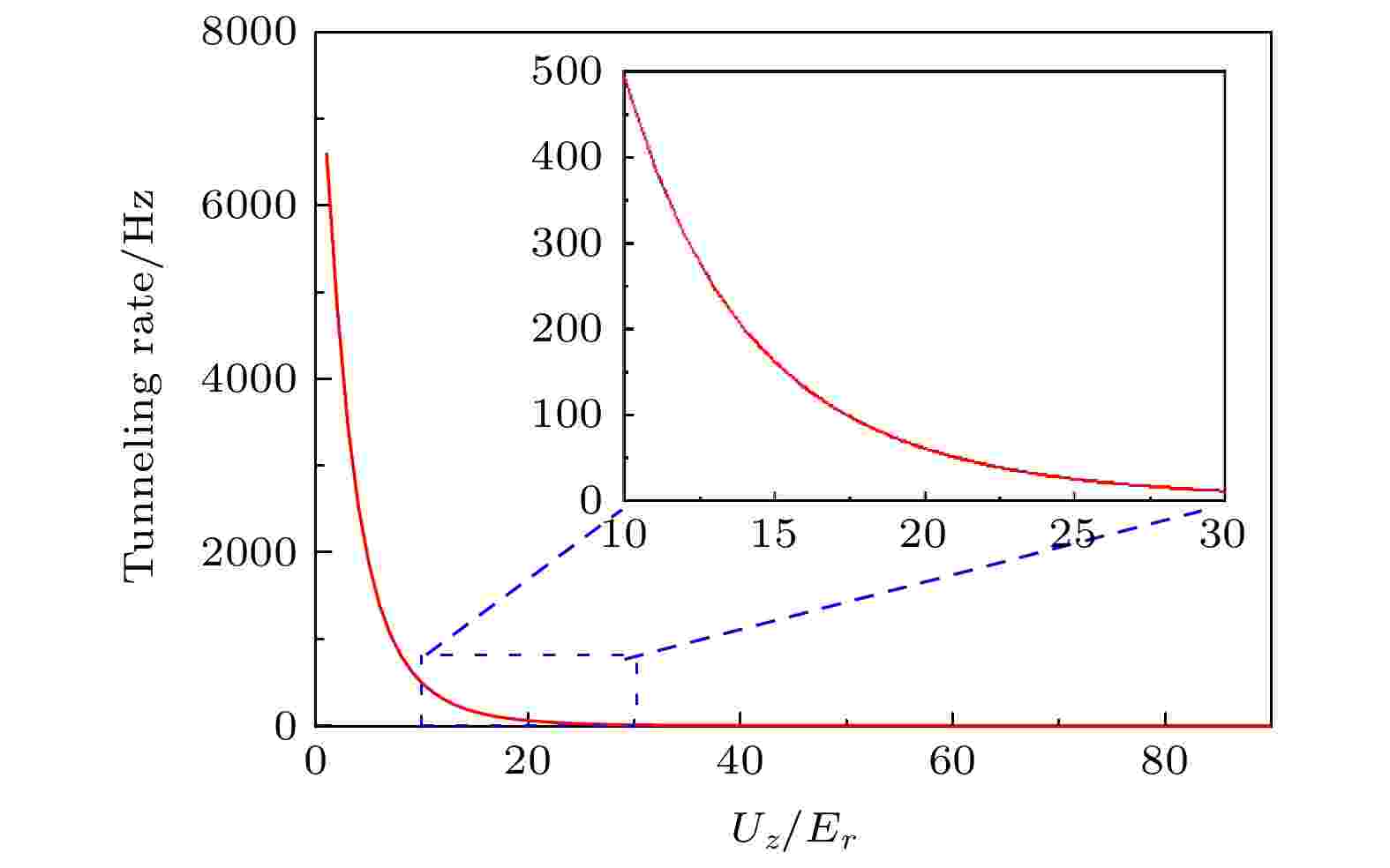
2022, 71 (7): 073701.
doi: 10.7498/aps.71.20212038
Abstract +
For a one-dimensional optical lattice clock built in the horizontal direction, when the stability and uncertainty of the system reach the order of 10–18 or more, the clock frequency shift caused by the quantum tunneling effect becomes not negligible. In the shallow optical lattice, the quantum tunneling effect will cause the clock transition spectrum to be significantly broadened. So, in this paper the quantum tunneling phenomenon in the shallow optical lattice is studied, laying a foundation for the evaluation of uncertainty of 87Sr atomic optical lattice clock system. In this experiment, on the platform of one-dimensional 87Sr atomic optical lattice clock, the narrow-linewidth 1S0($ \left|g \right\rangle $ )→3P0($ \left|e \right\rangle $ ) transition (that is, the clock transition) is excited by an ultra-stable and ultra-narrow linewidth 698 nm laser, and the distribution of strontium atoms in a specific quantum state is prepared. In the deep optical lattice, after the cold 87Sr atoms in preparation reach a $ \left|e,{n}_{z}=1 \right\rangle $ state, the lattice depth of the optical lattice is adiabatically reduced. Then, the carrier-sideband resolved clock transition spectral line is detected in the shallow optical lattice. The obvious splitting of the carrier spectral line is observed from the clock transition spectral line, which indicates that the strontium atom has an obvious quantum tunneling phenomenon between the adjacent lattice sites of the optical lattice. In addition, when the lattice potential lattice depth is reduced, owing to the incommensurability of lattice light wavelength (813 nm) and clock laser wavelength (698 nm), the tunneling of atoms between adjacent lattice points will lead to spin-orbit coupling effect. Owing to the exceptionally long lifetime (120(3) s) of 3P0 state, it can not only suppress the decoherence, but also reduce the atomic loss rate caused by spontaneous emission. This has a natural advantage for studying the spin-orbit coupling of fermions. Therefore, the understanding of quantum tunneling mechanism in optical lattice is not only conducive to improving the uncertainty of the 87Sr atomic optical lattice clock, but also lays the foundation for observing the spin-orbit coupling effect of fermions on this platform.
ELECTROMAGNETISM, OPTICS, ACOUSTICS, HEAT TRANSFER, CLASSICAL MECHANICS, AND FLUID DYNAMICS

2022, 71 (7): 074101.
doi: 10.7498/aps.71.20212036
Abstract +

COVER ARTICLE
2022, 71 (7): 074201.
doi: 10.7498/aps.71.20211978
Abstract +
X-ray ghost imaging is a low-dose, non-localized imaging method, which is of great significance in medical diagnosis and biological imaging. In crystal diffraction based X-ray ghost imaging, the blurring patterns in the diffracted beam, caused by the crystal vibration, can result in a reduction in the contrast and spatial resolution of the reconstructed imaged by ensemble average. In the paper, we systematically analyze the influence of the blurring degree of the speckle patterns from the diffracted beam on the normalized second-order intensity correlation function $ {g}^{\left(2\right)} $ numerically and theoretically. Both demonstrates that as the blurring degree increases, the maximum value of $ {g}^{\left(2\right)} $ decreases and the full width at half maximum broadens, which theoretically proves the blurring degree relating to image quality. In order to solve the above problem, in the paper we propose a $ {G}_{\mathrm{L}\mathrm{H}} $ enhanced ($ {G}_{\mathrm{L}\mathrm{H}}\mathrm{E} $ ) method to optimize the image quality based on the scheme ($ {G}_{\mathrm{L}\mathrm{H}} $ ) which directly correlates the bucket signals in diffracted beam with the high-definition patterns in transmitted beam. The simulation experiments exhibit that the $ {G}_{\mathrm{L}\mathrm{H}}\mathrm{E} $ method can improve both the image contrast and the spatial resolution simultaneously. As the blurring degree increases, the difference between the peak signal-to noise ratio of the reconstructed image by the iterative method and that by the scheme $ {(G}_{\mathrm{L}\mathrm{L}}) $ which preprocess the speckle patterns in the transmitted beam through Gaussian filtering, becomes greater. Furthermore, the ${G}_{\mathrm{L}\mathrm{H}}\mathrm{E} $ is almost immune to the additive noise. In summary, the present study provides a feasible idea for the practical application of X-ray ghost imaging based on crystal diffraction.

2022, 71 (7): 074202.
doi: 10.7498/aps.71.20212131
Abstract +
The squeezed light field in the band of alkali metal atomic transitions is an important quantum resource in the field of quantum information and precision measurement. The wavelengths of atomic transition lines (760–860 nm) are relatively short. Limited by the gray-tracking effect of nonlinear crystals, the squeezing degree of the squeezed light in this band generated by the optical parametric amplifiers is low. Now, the squeezing is about 3–5 dB. Considering the problems in the experimental generation of the squeezed light at the wavelengths of atomic transitions, the variation law of quantum noise of the light field output from the single optical parametric amplifier with its physical parameters is studied theoretically, and the optimal physical parameters are obtained. To further improve the squeezing in the band of alkali metal atomic transitions, the cascaded optical parametric amplifiers are considered. Based on the basic theory of the optical parametric amplifiers, the theoretical model of the cascaded optical parametric amplifiers is constructed, in which the optical loss and phase noise of the cascaded optical loops are considered. Based on this, the quantum noise characteristics of the light field output from the cascaded system versus the optical loss and phase noise are analyzed at the frequencies of 2 MHz and 100 kHz, respectively. It is found that for the squeezing at 2 MHz, cascading 2 to 3 optical parametric amplifiers can significantly improve the squeezing under the premise of the low optical path loss and phase noise; for the squeezing in the low-frequency band, the enhancement of the squeezing for the cascaded system is quite weak. Under the current experimental parameters, the squeezing at 2 MHz of the squeezed light on rubidium resonance can be improved from –5 dB to –7 dB by cascading another DOPA. For the squeezing at low frequency band, the cascaded system proves to be useless, and the efforts should be made to reduce the technique noise in the low frequency band. Furthermore, the quantum limit and spectral characteristics of the squeezed light field output from the cascaded system are further explored. This study can provide reference and guidance for the improvement in the squeezing degree of the band of atomic transitions.

2022, 71 (7): 074203.
doi: 10.7498/aps.71.20211961
Abstract +
High-precision synchronization between pump and signal is one of the key issues that should be solved in picosecond short pulse pumped optical parametric chirped pulse amplification (ps-OPCPA). Based on the all-OPCPA laser facility in Research Center of Laser Fusion, China Academy of Engineering Physics, the high-precision active pump-signal synchronization technique used in its ps-OPCPA frontend is studied in detail in this paper. The synchronization is actively controlled by an amplified narrowband spectrum from the short ps-pulse pumped optical parametric amplification of a large chirped signal. By reasonably designing the time-domain broadening chirped coefficient of the signal in the feedback optical path, relative timing jitter between pump and signal of the ps-OPCPA frontend decreases from ps to one hundred fs, which greatly improves its energy and spectral stability. The root mean square (RMS) value of the relative timing jitter decreases from 458 to 93 fs, which improves the RMS instability of the output energy from 30.3% to 3.15%, and a stable wide spectrum with width greater than 100 nm is obtained in 7-min measurement.
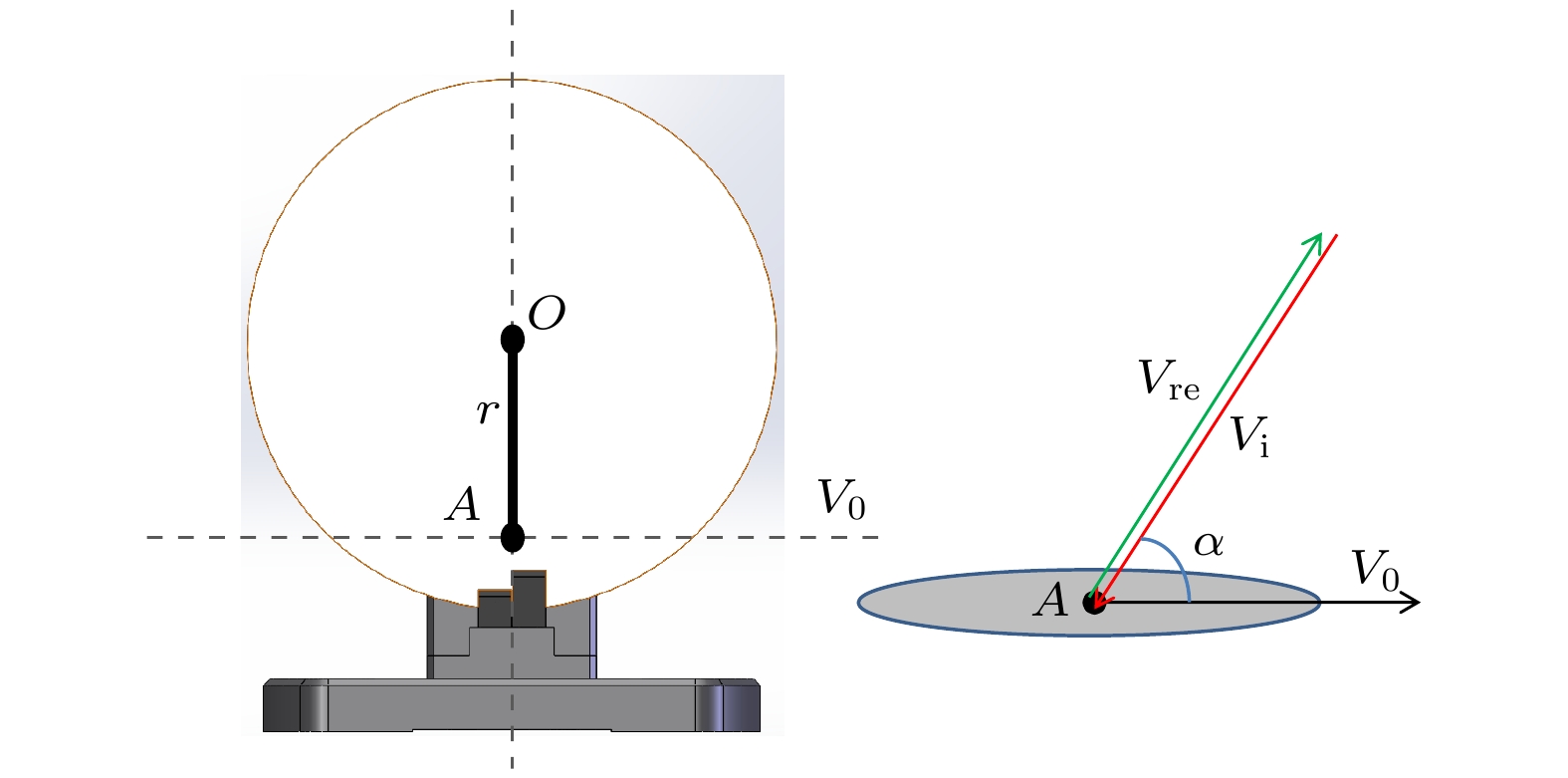
2022, 71 (7): 074204.
doi: 10.7498/aps.71.20211252
Abstract +
The middle- and upper- atmosphere wind field are important parameters that characterize the middle- and upper-atmosphere environment, respectively. The detection of the middle- and the upper-atmosphere wind field are of great significance in the civil field and military field. Laser heterodyne spectroscopy technology is a passive remote sensing detection technology with high spectral resolution and sensitivity, and has developed rapidly in recent years. The laser heterodyne spectrometer that takes laser heterodyne spectroscopy technology as its core, is developed due to its small size, light weight and stable structure. The verification of the ground-based wind field detection performance of the laser heterodyne spectrometer is a key part of its application to satellites. In this paper, a wind speed simulation device is built in a laboratory environment to achieve a wind speed change from 0 m/s to 25 m/s in a wind field. A laser heterodyne spectrometer with a spectral resolution of 0.003 cm–1 is used to measure the CH4 absorption spectrum without and with a wind field for different wind speeds, the resolution of measuring wind speed is 3 m/s. For relative and absolute calibration of the distributed feedback laser (DL) frequency, an interference fiber with a free dispersion range D* = 0.01167 cm–1, a wavemeter and a reference cell is used. The experimental results effectively verify the wind measurement performance of the laser heterodyne spectrometer and prove the possibility of using the laser heterodyne spectrometer to measure the atmospheric wind field.

EDITOR'S SUGGESTION
2022, 71 (7): 074205.
doi: 10.7498/aps.71.20211998
Abstract +
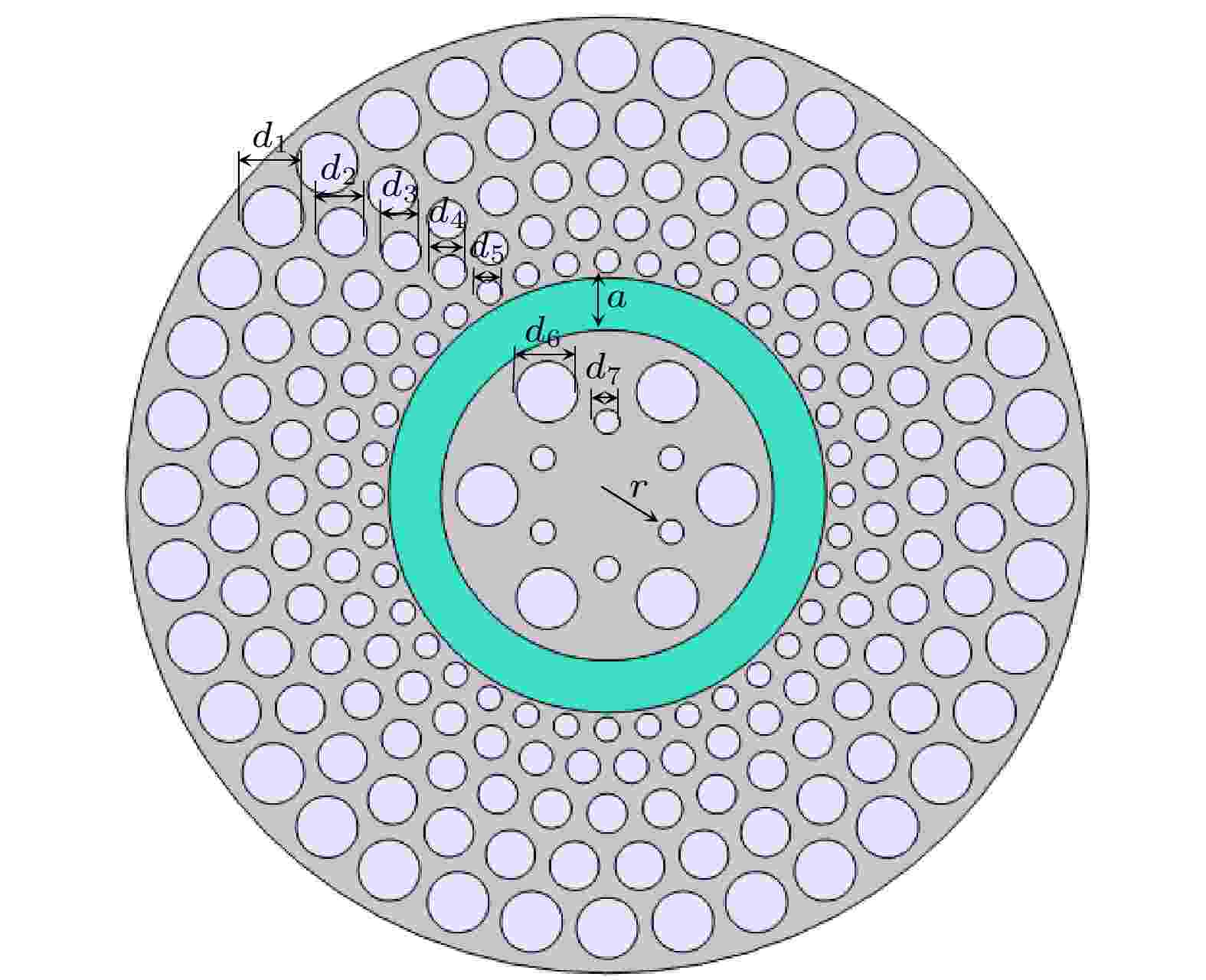
2022, 71 (7): 074206.
doi: 10.7498/aps.71.20211909
Abstract +
A probe made of amino acids is arranged in a linear chain and joined together by peptide bonds between the carboxyl and amino groups of adjacent amino acid residues. The sequence of amino acids in a protein is determined by a gene and encoded in the genetic code. This can happen either before the protein is used in the cell, or as part of control mechanisms. In order to transmit and amplify high-purity orbital angular momentum mode, a photonic crystal fiber amplifier based on stimulated Brillouin amplification is proposed and designed in this paper. The transmission properties of the photonic crystal fiber amplifier are systematically analyzed by using the finite element method in the C-band. The results show that this photonic crystal fiber amplifier can support the transmission and amplification of 66 orbital angular momentum modes, and all values of the purity of the orbital angular momentum modes supported by this amplifier are higher than 99.4%. By systematically analyzing the Brillouin gain spectra of orbital angular momentum modes with different topological charges, it is found that they have all high Brillouin gain coefficients (> 7 × 10–9 m/W) which are 4–5 orders of magnitude higher than the existing OAM amplifiers with the best performance, thus higher signal gain can be obtained. The comprehensive performance of the proposed photonic crystal fiber amplifier is superior to that of the existing optical fiber amplifiers based on stimulated Brillouin amplification and the optical fiber amplifiers doped with rare-earth ions. This makes the amplification and long-distance transmission of OAM mode stable and accurate and provides a possibility for designing the orbital angular momentum mode laser system.
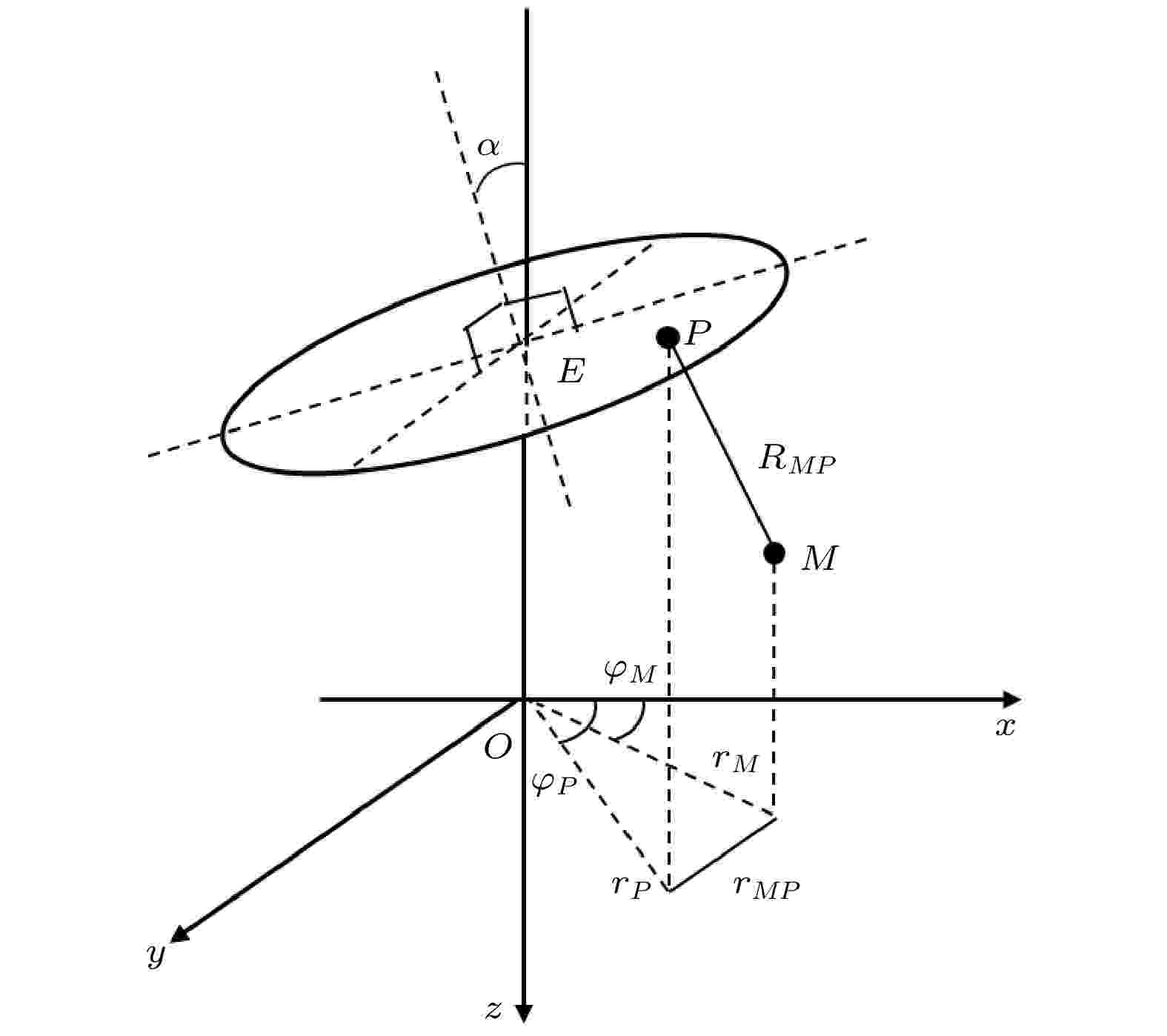
2022, 71 (7): 074301.
doi: 10.7498/aps.71.20211718
Abstract +
The sound radiation field of a circular piston source in an infinite plane rigid baffle can be approximated as an axisymmetric directional spherical-wave. The interface response expressions of the axisymmetric directional spherical-wave for the piston parallel with the interface has already been obtained in previous studies. On condition that the distance from the piston center to the interface is much greater than the piston radius, we first derive the conical wave expansion of the axisymmetric directional spherical-wave which is obtained by using the conical wave expansion of the homogeneous spherical-wave and the formula of the axisymmetric directional spherical-wave excited by a circular piston in an rigid infinite plane, and then derive the expression of the interface reflection wave of the axisymmetric directional spherical-wave for the piston non-parallel to the interface. The expression of the interface reflection wave is simplified into a simplified expression by saddle point method on condition that the source distance is much larger than the acoustic wavelength. The simplified expression is not only simple in the calculation, but also clear in the physical meaning. The simplified expression shows that the interface reflection wave of the axisymmetric directional spherical-wave can be regarded as the product of the axisymmetric directional spherical-wave excited by the piston mirror image and the reflection coefficient. The calculations show that when the piston radius is smaller than the acoustic wavelength, the reflected wave is less sensitive to the angle included between the piston and the interface and the azimuth of the receiving point, and the directivity of the reflected wave is weak. When the piston radius is greater than the acoustic wavelength, the reflected wave is very sensitive to the angle included between the piston and the interface and the azimuth of the receiving point, and the directivity of the reflected wave is strong. Increasing the angle included between the piston and the interface, the reflected wave and its directivity both first increase and then decrease. The reflected wave is largest and the directivity of the reflected wave is strongest when the angle included between the piston and the interface is equal to that between the interface normal and the connecting line between the mirror image of the piston center and the receiving point.

EDITOR'S SUGGESTION
2022, 71 (7): 074302.
doi: 10.7498/aps.71.20212009
Abstract +
Wrinkle defects will be inevitably produced during composite manufacturing and the in-service life of composite structures. Because of their diverse morphological changes and small deformation, it is difficult to manually identify the wrinkle with important errors. In order to improve the inspection efficiency, a Mask-RCNN algorithm is proposed to detect and classify different forms of wrinkle defects in composites based on phased array images. Carbon fiber composite laminates are prepared first in different forms of wrinkle defects. Secondly, the ultrasonic phased array is used to collect full matrix data. The longitudinal scanning image of the composite laminate is then obtained through the wavenumber imaging algorithm. According to the geometric characteristics of the folds in the geological layer, the wrinkles in the composite laminate are divided into three categories, and the relationship between the wrinkle shape and the material damage degree is established. The Mask-RCNN algorithm is finally proposed for automaticaly detecting and classifying the wrinkle defects. The introduction of semantic segmentation in this algorithm can help to reveal the positions and shapes of wrinkle defects. The experimental results show that the accuracies of Mask-RCNN in the recognition of different forms of wrinkles reach 92.1%, 90.9%, and 93.3%, respectively, and the classification and recognition of wrinkles are accurate and effective. It provides theoretical support for the integration and automation of data acquisition-imaging-defect recognition in composite industries.

2022, 71 (7): 074303.
doi: 10.7498/aps.71.20211869
Abstract +
From the perspective of calculating ultrasonic absorption and scattering properties of individual solid particle and droplet, the ultrasonic wave is treated as discrete phonons. And by tracking their motion process and event statistics, a new prediction model of ultrasonic attenuation of spherical mixed particles in gaseous medium is established with Monte Carlo method. Considering the difference in physical properties between solid particles and liquid particles, the ultrasonic absorption characteristics of the two kinds of particles are obviously different, and when dimensionless particle size kR ≤ 1, the backscattering of particles is uniform and dominant, then the ultrasonic scattering pressures gradually transit from the dominant position of backscattering to the trend of forward enhancement with the increase of dimensionless particle size. The numerical simulation results for the system with a single particle type are compared with those from various standard models such as classical ECAH model and McC model, showing that they are in good agreement. Similarly, the results are then compared with experimental results, which accord with each other in general. After calculating and verifying the ultrasonic attenuation of aluminum particles and submicron droplets respectively in air, the method is extended to the three-phase monodisperse and polydisperse mixed particle system composed of aluminum particles and liquid droplets. In the three-phase system of gas-liquid-solid mixed particles, the particle type has a significant influence on ultrasonic attenuation, and the attenuation contribution of different particles against mixing ratio does not follow the linear gradient with the increase of volume concentration. For a polydisperse system, the ultrasonic attenuation spectrum is greatly affected by the average particle size, but it is insensitive to the width of particle size distribution. The numerical results also show that both the particle type and particle distribution size should be carefully take into account in the polydisperse system. Moreover, the MCM model can be further extended to non-spherical particles and combined with mathematical inversion to form the theoretical basis for the measurement of mixed particle system.
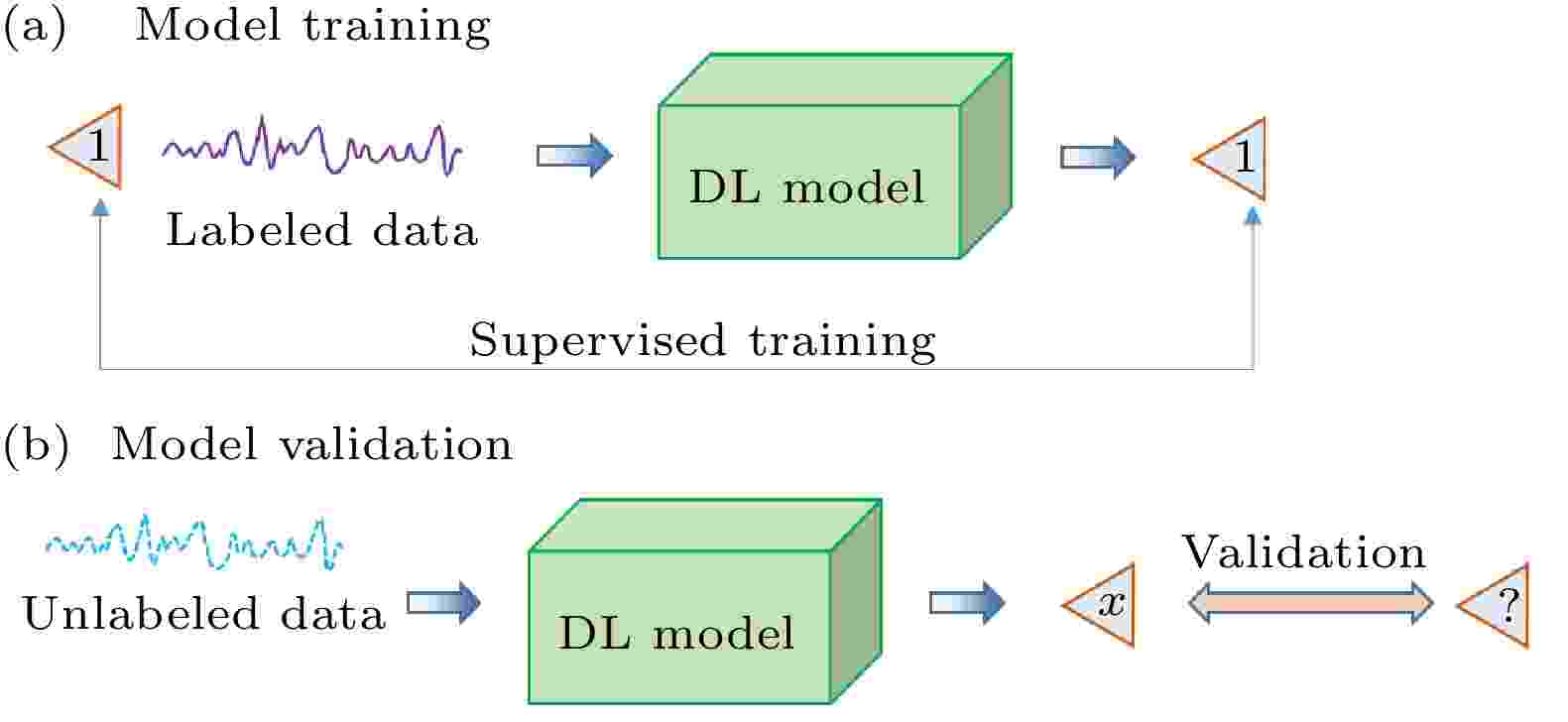
2022, 71 (7): 074701.
doi: 10.7498/aps.71.20211373
Abstract +
Extraction and recognition of the features of flow field is an important research area of fluid mechanics. However, the wake flow field of object immersed in fluid is complicated in the case of medium- and high-Reynolds number, thus it is difficult to extract and recognize the key features by using traditional physical models and mathematical methods. The continuous development of deep learning theory provides us with a new method of recognizing the complex flow features. A new method of extracting the features of the flow time history is proposed based on deep learning in this work. The accuracy of four deep learning model for feature recognition is studied. The results show that the proposed model can identify different characteristics of the wake time history and object shapes accurately. Some conclusions can be obtained below (i) The model based on convolutional layers has higher accuracy and is suitable for analyzing the features of flow time history data. (ii) The residual convolutional network, with a deeper structure and more complex inter-layer structure, has highest accuracy for feature recognition. (iii) The proposed method can extract and recognize the flow features from the perspective of physical quantities time history, which is a high-accuracy method, and it is an important new way to study the features of flow physical quantities.
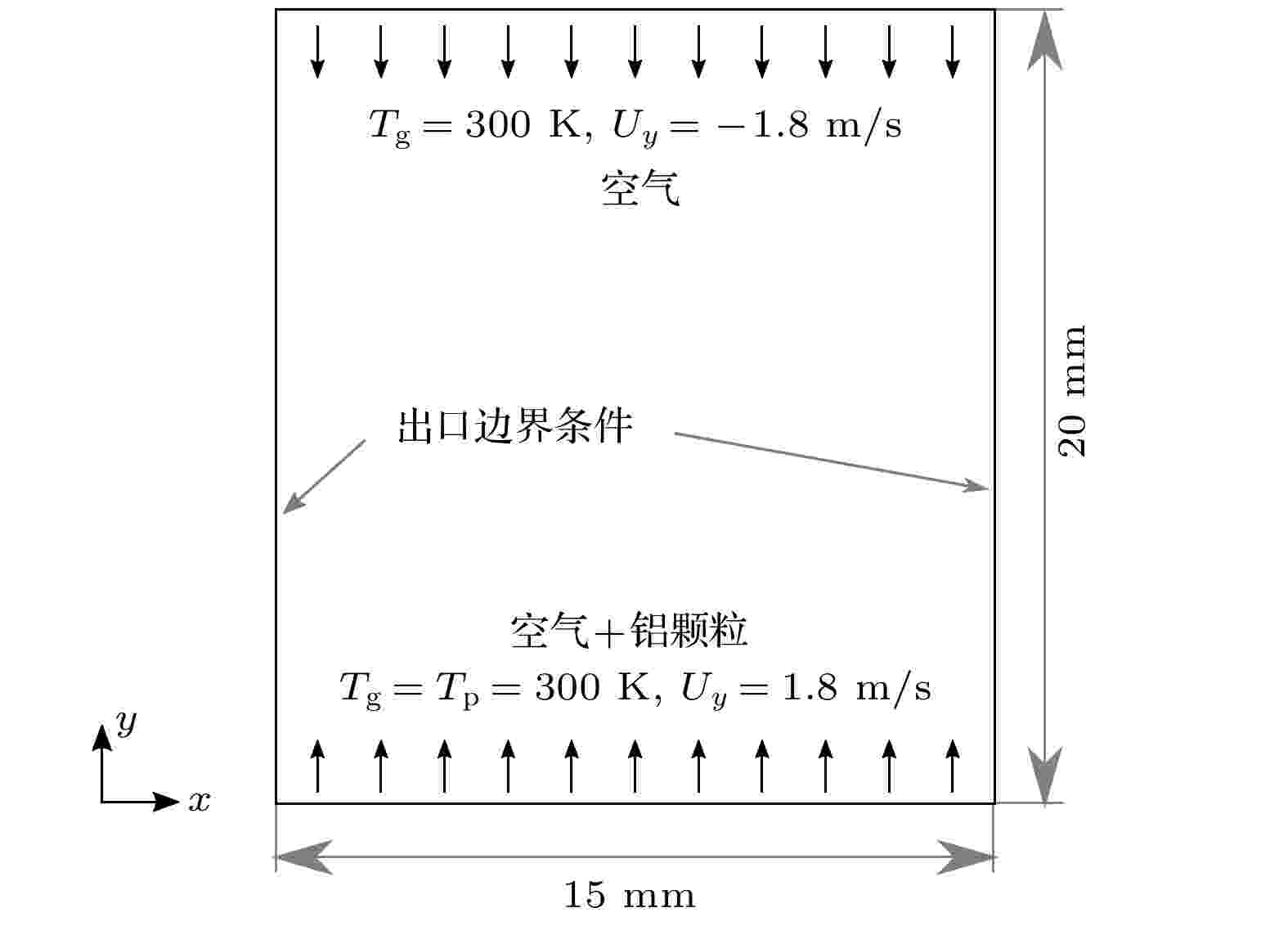
2022, 71 (7): 074702.
doi: 10.7498/aps.71.20211664
Abstract +
PHYSICS OF GASES, PLASMAS, AND ELECTRIC DISCHARGES

2022, 71 (7): 075201.
doi: 10.7498/aps.71.20211941
Abstract +
The physical process of tokamak plasma spans a large space-time scale, and the main physical processes differ widely in different spatial regions (such as core, pedestal, scraping-off layer, divertor region), so it is necessary to adopt the integrated modeling method to analyze the physical problems on a global multi-space-time scale. In order to study in depth the transport and confinement during the steady-state or ramp-up of the tokamak discharging experiment, it is necessary to use a variety of physical programs to carry out integrated simulation research and physical analysis. Based on the OMFIT platform, in this paper the integrated simulation verification and analysis of the shot #37012 are conducted, which is a high-$\beta $ discharge experiment on HL-2A device and verifies the reliability and applicability of those programs. In this process, the experimental parameters are checked and supplemented by selecting appropriate models. The simulation results after evolution are consistent with the experimental results. On this basis, we use the TGLF model to analyze the linear electrostatic drift wave instability in the core region. The reason for the improvement of the H-mode confinement by NBI off-axis heating is that the ETG instability in the NBI power deposition region is suppressed. The transport is dominated by ITG instability in the internal transport barrier (ITB), and the transport is reduced to the level of neoclassical transport.
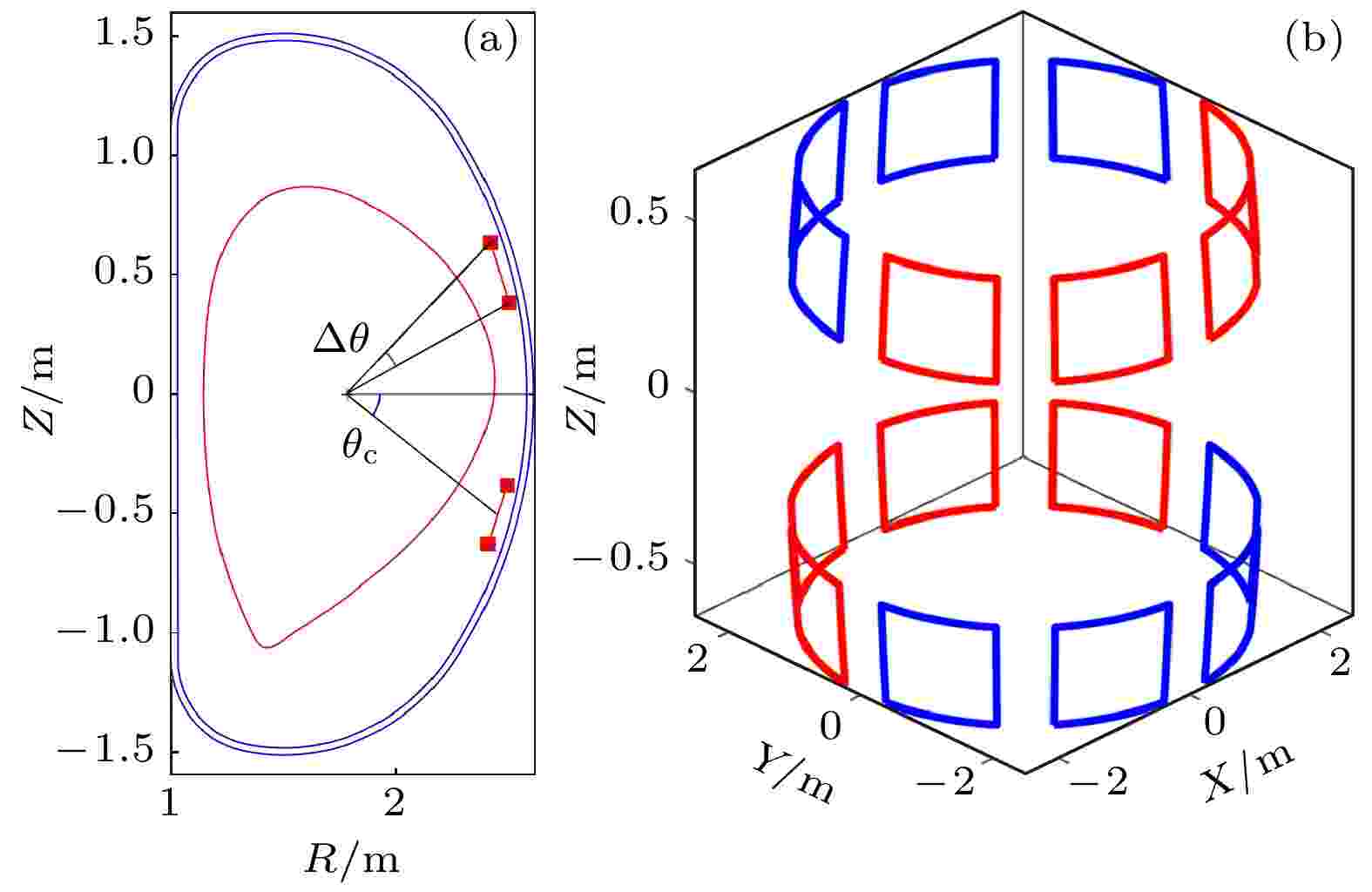
2022, 71 (7): 075202.
doi: 10.7498/aps.71.20211975
Abstract +
The type-I edge localized mode (ELM) is a critical event associated with magneto-hydrodynamic(MHD) instabilities occurring in tokamak high-confinement (H-mode) discharges, that leads to huge heat loads on the plasma phasing components (PFC) and may result in material damages. It is important to effectively control large ELMs, in order to ensure safe operation of the future reactor-scale devices such as ITER and DEMO. Resonant magnetic perturbation (RMP) has been experimentally demonstrated to be a mature and robust technique for controlling ELMs. A set of parameters, such as the edge safety factor, the plasma flow, the RMP coil geometry and the spectrum of the applied external field, have been found to play important roles in controlling ELMs by RMP. Furthermore, the plasma pressure is known to affect the plasma response to the RMP field, in particular near the no-wall beta limit. This is because high plasma pressure drives the resonant field amplification of the external field by the plasma response. The ITER 10 MA steady state scenario will be operated near the no-wall stability limit. The new tokamak device HL-2M will also operate in the relatively high-beta regimes. On the other hand, more investigations are still needed to understand the influence of toroidal flow on the high-beta plasma response. This work employs a single fluid toroidal model to compute the plasma RMP response in HL-2M, emphasizing on the roles of two key physical quantities: the plasma resistivity and the toroidal rotation. The former allows penetration of the external RMP field into the plasma, while the latter mainly provides screening effect on the resonant field component. More specifically, the MARS-F code is utilized to study the plasma response to the externally applied n =1 ( n is the toroidal mode number) RMP field for high-beta HL-2M discharges, while varying the plasma toroidal rotation profile. The plasma response is found to (i) substantially modify the poloidal spectrum of the applied vacuum RMP field, (ii) change the amplitude of the resonant radial field amplitude near the plasma edge, and (iii) affect optimal current phasing between the two rows of RMP coils on HL-2M. A sufficiently slow toroidal flow near the plasma edge amplifies the radial field at rational surfaces associated with the perturbation. Since the latter serves as a reliable indicator for controlling the type-I edge localized mode (Type-I ELM) by RMP, varying rotation profile near the plasma edge offers a promising approach to optimize ELM control.
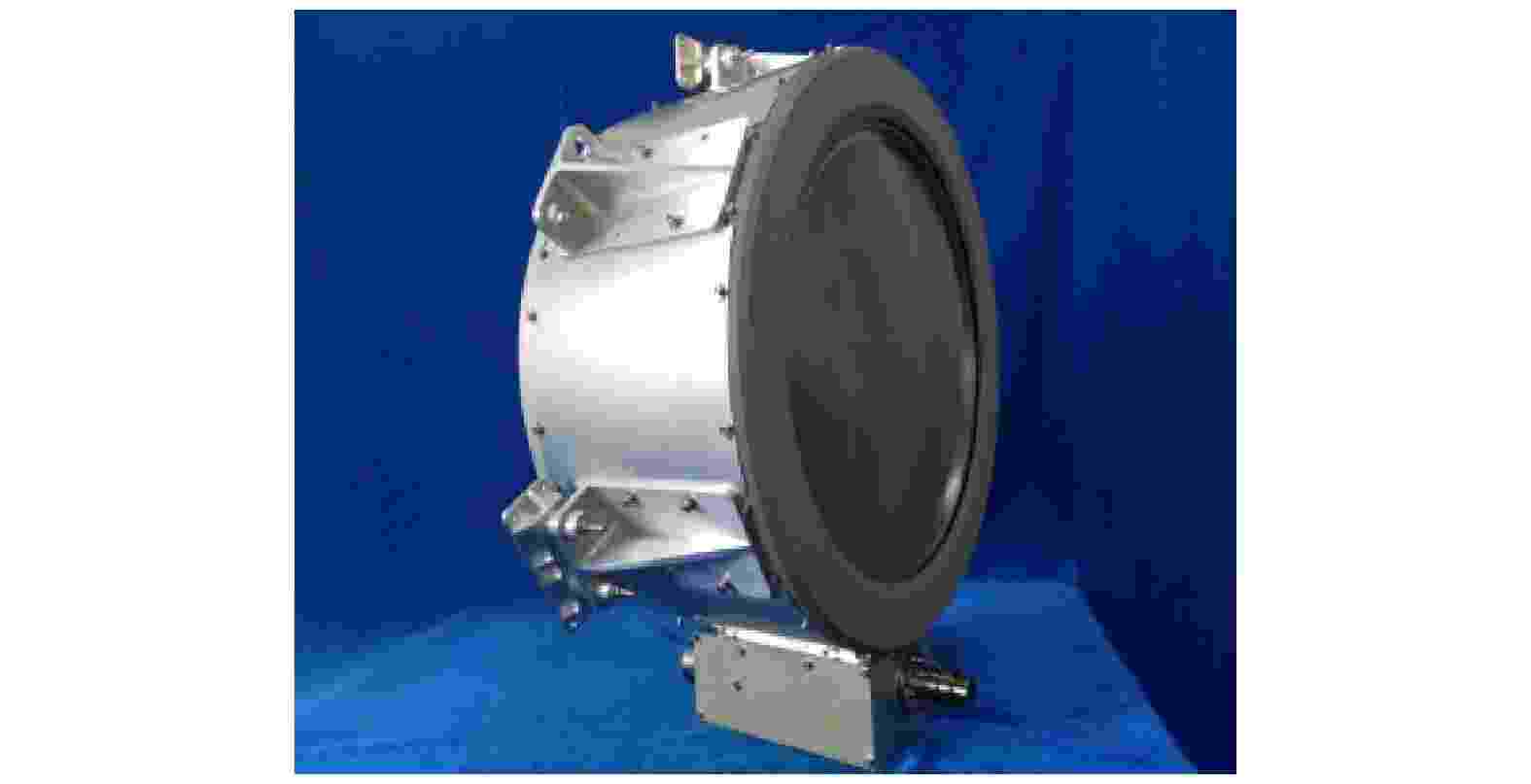
2022, 71 (7): 075203.
doi: 10.7498/aps.71.20212045
Abstract +
In view of the requirements for the application of electric propulsion system to China's asteroid deep space exploration mission, the relationship between input parameters and output characteristics of the thruster is established based on the basic plasma theory, and the input parameters such as screen grid voltage, beam current, anode current, acceleration voltage and propellent flow rate at each operating point are designed. The operating characteristics of the thruster are studied experimentally and theoretically. The test results show that under the design input parameter values, the maximum error of thrust is less than 3% and the maximum error of specific impulse is less than 4% at 23 operating points, the ion thruster can operate steadily in an input power range of 289–3106 W, thrust range of 9.7–117 mN, specific impulse range of 1220–3517 s, and efficiency range of 23.4%–67.8%. The electron backstreaming limited voltage decreases monotonically with thrust increasing and its minimum and maximum thrust value are 79.5 V and –137 V, respectively. The discharge loss decreases from 359.7 to 210 W/A as the power increases, and there is an adjusted turning at the input power 886 W, the efficiency increases with power increasing and after 1700 W the efficiency growth rate slows down and stabilizes. The optimum operating interval should be selected in practical on-orbit application. Controlling these parameters reasonably can improve thruster performance and lifetime. A 300-h wear test shows that the thruster works stably and the performance indicators meet the design requirements of ±3% uncertainty.
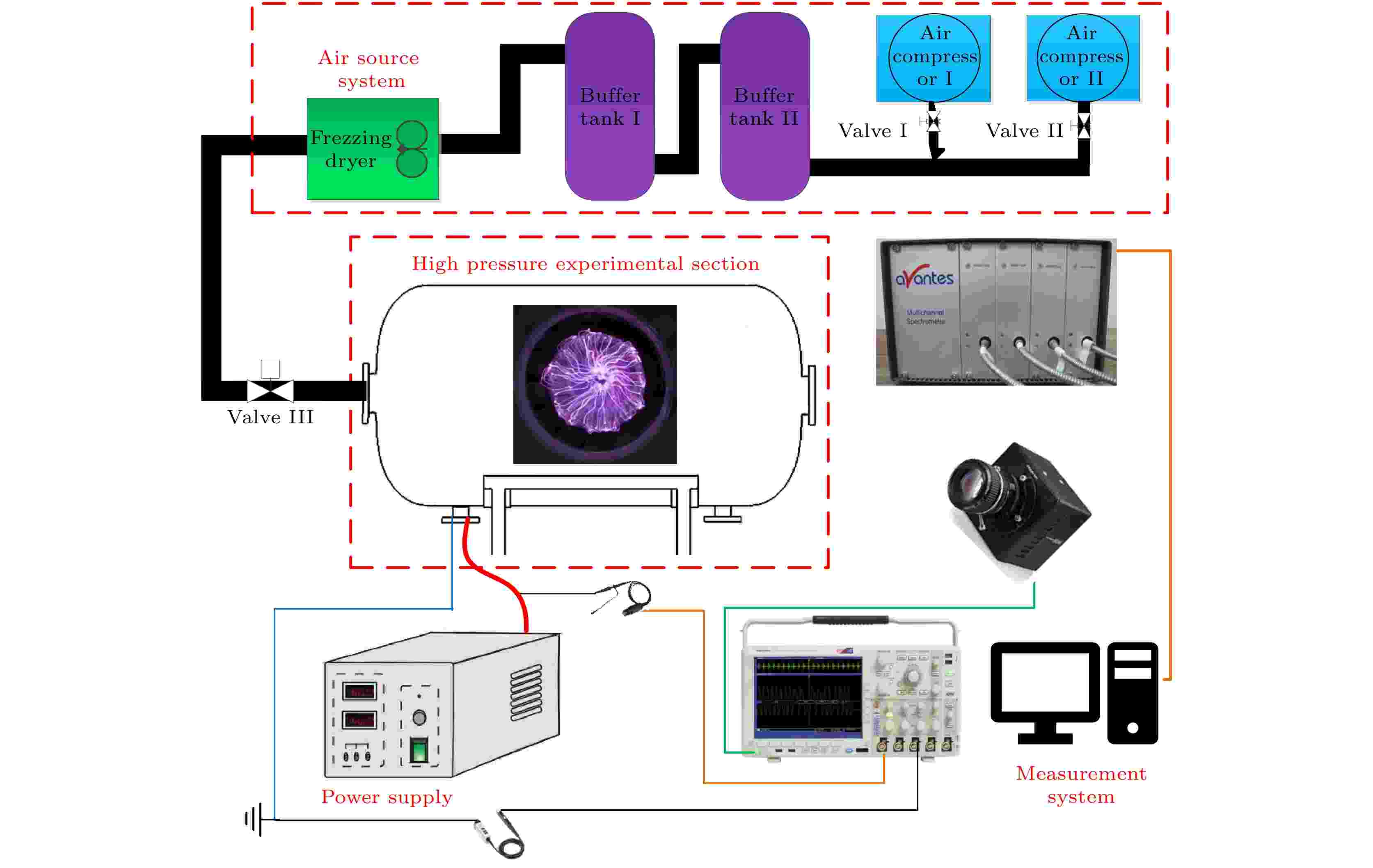
2022, 71 (7): 075204.
doi: 10.7498/aps.71.20211232
Abstract +
In order to study the stability of gliding arc plasma discharge under mal-conditions, an experimental system for studying the high air pressure alternating current rotating gliding arc discharge is built. The discharge characteristics, arc motion characteristics and spectral characteristics of rotating gliding arc discharge are analyzed under high pressure experimentally. Experimental results show that the voltage, current and energy increase in the gliding arc discharge with the increase of air pressure. As the air pressure rises to 0.52 MPa, the discharge energy increases from 84.74 to 147.13 J. With the increase of gas pressure, the breakdown frequency of the arc does not change monotonically, but reaches a maximum value of 26.55 kHz at 0.2 MPa, while the emission spectral intensity increases. The “arc channel mutation” occurs in the process of arc motion under high pressure. The electron excitation temperature in the process of gliding arc discharge is calculated by the two-line method, and the electron excitation temperature of gliding arc discharge is 0.8153 eV at an atmosphere pressure. The electron excitation temperature rises with the increase of air pressure. The excitation temperature increases to 5.3165 eV at an air pressure of 0.4 MPa.
CONDENSED MATTER: STRUCTURAL, MECHANICAL, AND THERMAL PROPERTIES
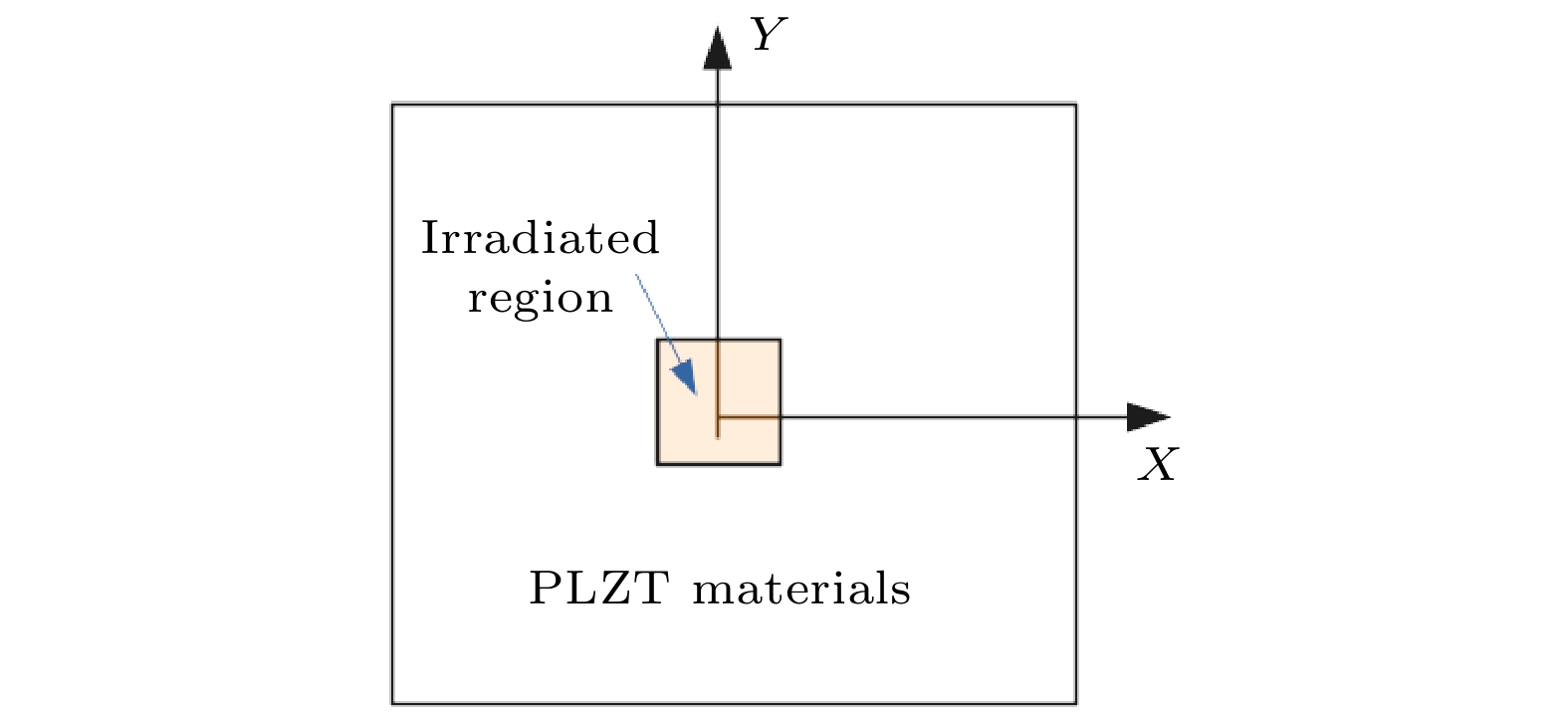
2022, 71 (7): 076101.
doi: 10.7498/aps.71.20212041
Abstract +
Lead lanthanum zirconate titanate (PLZT) has a broad application prospect for energy storage devices with high energy density, since it possesses excellent dielectric and energy storage properties. To investigate the irradiation damage to the PLZT induced by neutrons with different energy, the primary energetic recoil spectra of each kind of element are first extracted from the transportation simulations of neutrons with energy ranging from 1 to 14 MeV, respectively. Then, the displacement damages (including vacancies and interstitial atoms) induced by each type of recoil with different energy are simulated based on the binary collision approximation method. Finally the number of defects in PLZT produced by neutrons with an energy range from 1 to 14 MeV is calculated based on the recoil energy spectra and the defect number produced by the recoils. The results show that the number of defects produced in the PLZT material with a thickness of 3 cm is approximately independent of the neutron energy for the fast neutrons with energy in a range from 1 to 14 MeV, even though the primary recoil energy spectra from neutrons with different energy are completely different. The average number of defects produced in 3-cm-thick PLZT is about 460 ± 120 vacancies/neutrons. For neutrons with energy ranging from 1 to 14 MeV, the produced defect concentration in PLZT decreases slightly with the depth increasing within a thickness of 3 cm. The difference in defect concentration in this 3 cm is in a range of 50%. This decrease is caused mainly by the fact that some of neutrons are back-scattered during transport. The average defect concentration produced by neutron irradiation in the PLZT with a thickness of 3 cm is slightly(~20%) higher than that in the PLZT with a thickness of 1 mm. The reason for the higher defect concentration in a thicker (3 cm) PLZT can be attributed to the following facts: (i) the (n, 2n) reactions between neutron and material can make the number of neutrons increase during transport; (ii) the scattering can make the path of neutron longer; (iii) the inelastic scattering can lead to a smallnumber of moderated neutrons, which have a slightly larger interaction cross section with materials. This indicates the damage produced in thick PLZT is quite complicated and closely related to the process of neutron transport. This work presents a method of calculating the displacement damage of neutrons in materials, and the simulation results can provide guidance for studying the neutron irradiation effects of PLZT-based electronic devices.
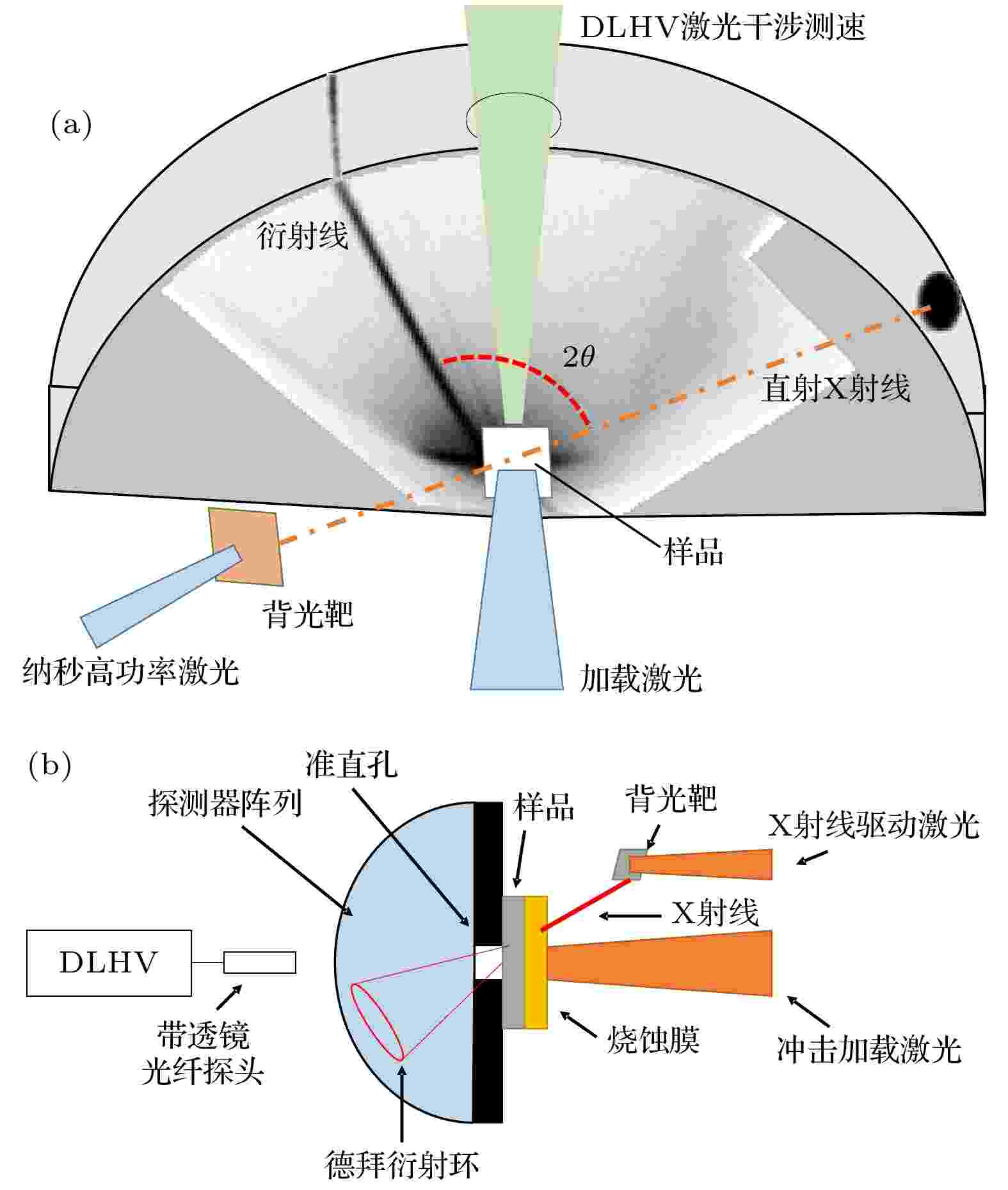
2022, 71 (7): 076201.
doi: 10.7498/aps.71.20212065
Abstract +
The solid-liquid phase transition under shock wave loading in materials is called shock melting. Shock melting is important not only in fields like high pressure EOS or material dynamic response, but also in applications like device protection in modern industry and national defense construction. The obtaining of precise melting curve is more than understanding the high pressure melting behavior, and it can provide the reliable evidence for the theoretical model of melting mechanism. So the solid-liquid phase transition under extreme conditions is a research hotspot, and a lot of researches have been carried out. But, the enormous discrepancy between the melting curve of dynamic loading and hydrostatic loading in transition metals, especially, the vanadium has been unclear for decades. The difference in melting temperature under 200 GPa between dynamic loading and hydrostatic loadirng is as large as twice (about 4000 K). Recently, Errandonea and Zhang’s experiments present a new insight into this discrepancy, indicating that the new shock melting curve is consistent with the extrapolated melting curve contained by LH-DAC. But all the dynamic loading experimental data are measured by macroscopic quantities; they can determine the occurrence of the phase transition, but cannot provide the microscopic structure of the material under extreme conditions. So, as the technic of in situ X-ray diffraction has developed well in recent years, we use the high power laser driving technic combining with in situ X-ray diffraction measurement to explore the structure of vanadium near the melting line. We measure the micro structure of vanadium at up to 200 GPa in shock experiment for the first time. We find that the bcc phase transition is not observed at around 60 GPa, which is different from previous experiments in DAC or gas gun loading experiments, but consistent with Chen’s leaser driving experiment. The result confirms that when the impact pressure is 155 GPa, vanadium still remains solid BCC phase. It becomes liquid at about 190 GPa. In contract to Zhang’s results, the DXRD melting point is consistent with the new melting line. This work provides the evidence of the consistency of shock and hydrostatic melting curve, confirming the phase boundary of vanadium under 200 GPa. This work has important scientific significance in understanding the pressure melting behavior of transition metals. The method in this work can be applied to the research of melting properties of other materials.
CONDENSED MATTER: ELECTRONIC STRUCTURE, ELECTRICAL, MAGNETIC, AND OPTICAL PROPERTIES

2022, 71 (7): 077101.
doi: 10.7498/aps.71.20212023
Abstract +
Based on first-principles calculations, the electronic structure, the transport and optical properties of TiOCl2 monolayer are systematically investigated. The vibrational, thermodynamic, and mechanical properties of TiOCl2 monolayer are studied by phonon spectrum, molecular dynamics and elastic constants calculations. All these results indicate that the TiOCl2 monolayer possesses good structural stability at room temperature and excellent mechanical properties. The electronic structure analysis shows that the TiOCl2 is an indirect band gap (1.92 eV) semiconductor. Its band structure can be significantly affected by in-plane stress. Specifically, the TiOCl2 monolayer undergoes an indirect-to-direct band gap transition under –4% uniaxial stress along the a-axis and the gap size decreases to 1.66 eV. Moreover, the TiOCl2 monolayer exhibits obvious anisotropy characteristics, and its electron mobility is 803 cm2·V–1·s–1 along the b-axis, whereas the hole mobility reaches 2537 cm2·V–1·s–1 along the a-axis. The wave peaks (valleys) of the absorptivity, reflectivity and transmittance shift toward the violet part of the visible band by the stress. All these appealing properties make the TiOCl2 monolayer a promising candidate for applications in optoelectronic devices.
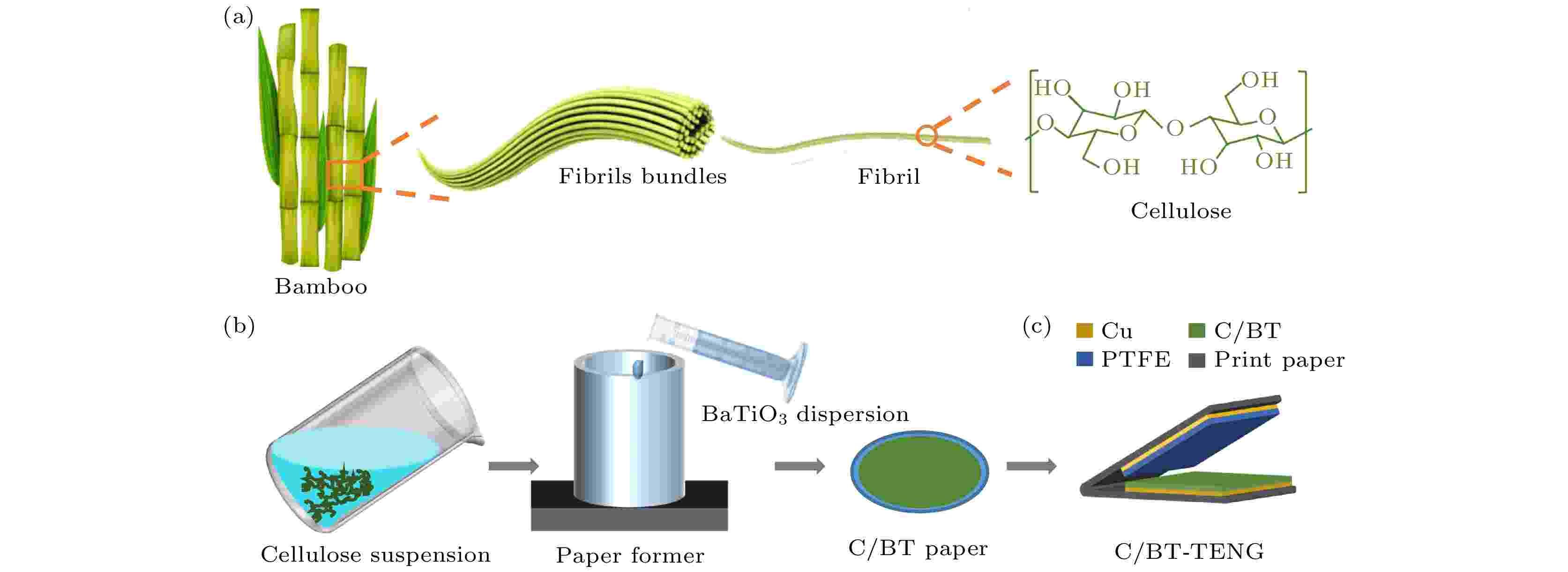
EDITOR'S SUGGESTION
2022, 71 (7): 077701.
doi: 10.7498/aps.71.20212022
Abstract +
As a new energy conversion device that can convert mechanical energy into electrical energy, triboelectric nanogenerator has attracted extensive attention since its invention. However, its environmental performance is limited because the raw materials are mostly synthetic polymer materials. Using green and environmentally friendly cellulose materials to prepare triboelectric nanogenerators is one of the important ways to solve the above problems. In this study, cellulose/barium titanate composite paper is prepared by using bamboo cellulose and barium carbonate (BaTiO3) as raw materials and combining wet papermaking and doping modification. The paper based triboelectric nanogenerator (C/BT-TENG) is constructed by using the cellulose/barium titanate composite paper as a positive friction layer. The results show that the addition of BaTiO3 significantly improves the relative dielectric constant of the composite paper, and the output performance of C/BT-TENG increases with the augment of BaTiO3 doping amount. When the doping amount is 4%, the open-circuit voltage and short-circuit current of C/BT-TENG reach the maximum values of 118.5 V and 13.51 µA, respectively, which are 51.3% and 41.2% higher than when pure cellulose paper is used as the positive friction layer. The mechanism of dielectric regulation to improve the C/BT-TENG output performance is analyzed by the modeling method. In addition, the C/BT-TENG has a good output performance and operation stability. When the load resistance is 5 MΩ, the maximum output power density of C/BT-TENG reaches 0.36 W/m2, simplying a good application prospect.
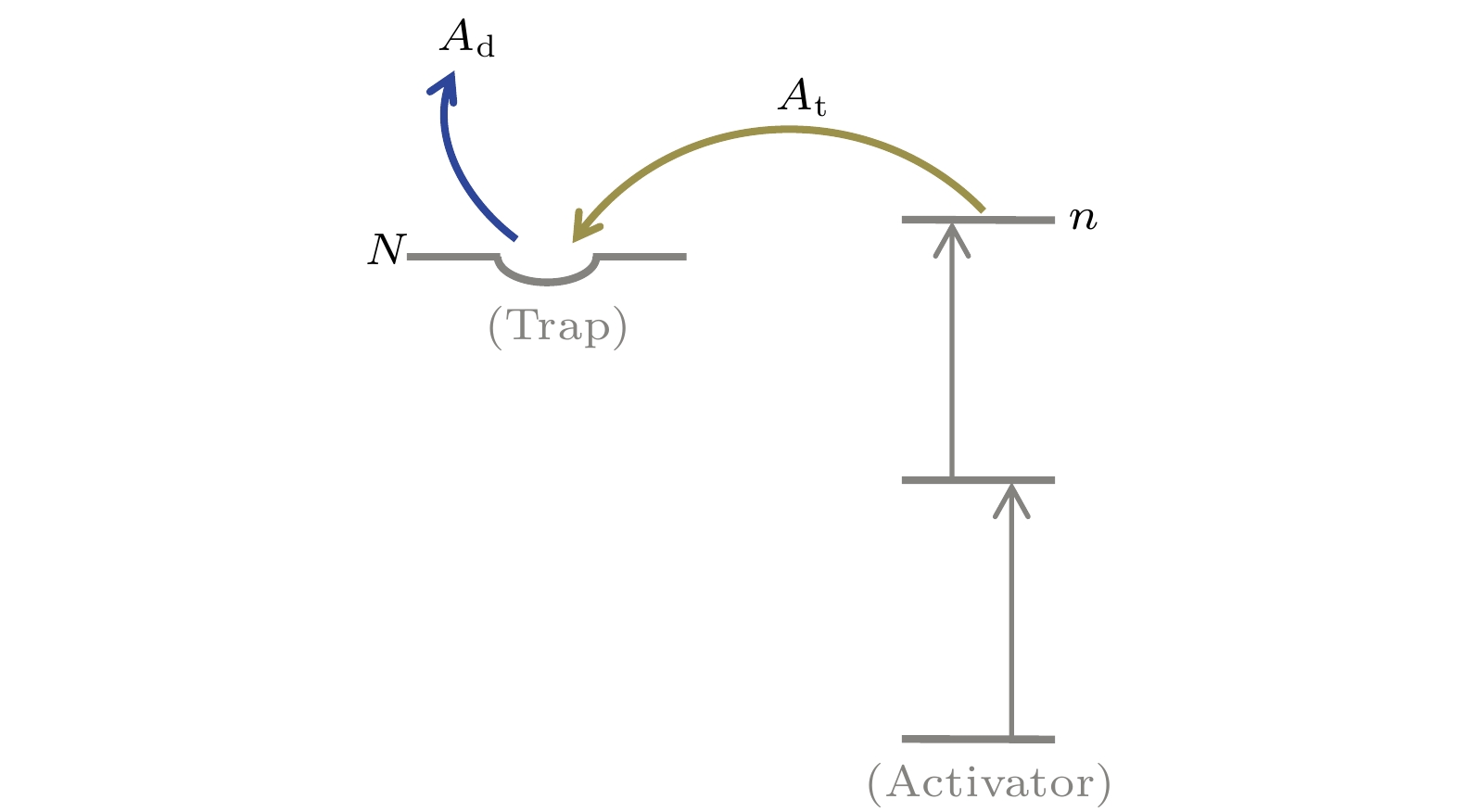
2022, 71 (7): 077801.
doi: 10.7498/aps.71.20211523
Abstract +
Persistent phosphor as a kind of light-emitting material can store excitation energy in the so-called traps, and then persistently release the energy in the form of light emission after the end of excitation. This emission is called persistent luminescence. Much attention has been paid to optimizing the emission performance of persistent phosphors, including emission wavelength and persistent time. However, research on the excitation for charging persistent phosphors is relatively lacking. To acquire the persistent luminescence effectively, the traps need to be filled typically by ionizing irradiation. That is, high-energy light (such as ultraviolet light) is a general requirement for charging the persistent phosphors. Taking into account the fact that low-energy illumination (e.g. visible or infrared light) is much more suitable and less harmful than ultraviolet light for some practical applications, taking advantage of the low-energy light excitation is therefore an urgent issue to be solved in the persistent luminescence area. Several low-energy excitation approaches have been reported, in which up-conversion charging (UCC) is a promising candidate for charging phosphors using low-energy excitation light sources. The definition of UCC is as follows: UCC is a non-linear excitation for storage phosphors, in which the traps are typically filled via a two-step ionization mechanism. Prior research on the UCC has focused primarily on the demonstration of two-step ionization and the associated trapping properties. Recently, researchers have realized that the excitation light may release some trapped electrons while filling the traps (i.e. excitation-light stimulated detrapping). Competition between the trapping and detrapping during the UCC has been roughly described on the assumption that the illumination dose is in a certain range and the effect of ambient-temperature stimulated detrapping is negligible. Despite the initial progress, the exact effect of detrapping on the UCC process needs to be further explored. Here we demonstrate the effect of detrapping on UCC dynamics by a rate equation approach. Accordingly, taking LaMgGa11O19:Mn2+ phosphor illuminated by a 450 nm laser for example, we measure its thermoluminescence. Our measurements reveal that the competition between the trapping and detrapping depends both on illumination power and on illumination duration. The experimental results are consistent well with the theoretical predictions, thereby offering a new insight into the understanding of UCC. In addition, the experimental demonstration on the LaMgGa11O19:Mn2+ phosphor allows us to explore the generality of the present UCC model. Accordingly, we expect some existing phosphors can now be revisited.
INTERDISCIPLINARY PHYSICS AND RELATED AREAS OF SCIENCE AND TECHNOLOGY
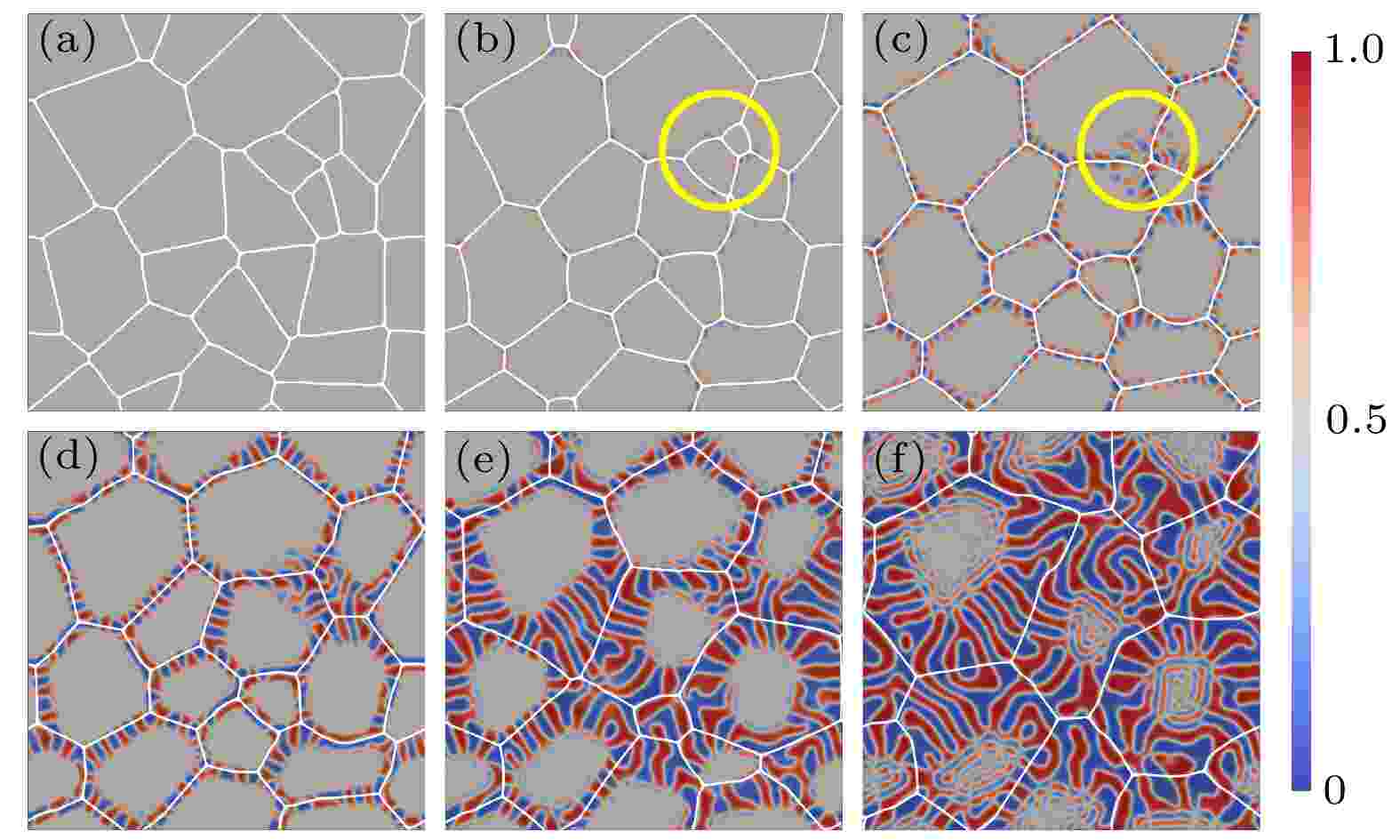
2022, 71 (7): 078101.
doi: 10.7498/aps.71.20211973
Abstract +
The grain boundary-directed spinodal decomposition has a substantial effect on the microstructure and properties of polycrystalline materials. However, due to the fact that the spinodal decomposition is usually too fast to be captured in experiments, our understanding of the grain boundary-directed spinodal decomposition process is still very limited. In this work, we simulate the spinodal decomposition process of a polycrystalline system by the phase-field model, check the influences of the curvature and the atom diffusion constant inside the grain boundary (Mt) on the phase decomposition patterns, and discuss the interaction between the moving grain boundaries and spinodal decomposition. The simulation results indicate that the velocity of spinodal decomposition near the grain boundary is faster, and the spinodal morphology at the grain boundary presents the anisotropic bicontinuous microstructures different from the isotropic continuous microstructures in the bulk phase. Further, we find that the spinodal pattern is parallel to the grain boundaries with larger curvatures, and it will perpendicular to the grain boundaries with smaller curvatures. We also find that the spinodal decomposition velocity increases with the augment of Mt , while the grain boundary migration velocity will first decrease and then increase with the augment of Mt under the effect of spinodal decomposition. Finally, we simulate the spinodal decomposition process of two-grain system in three dimensions, and we obtain the results consistent with the two-dimensional simulations.
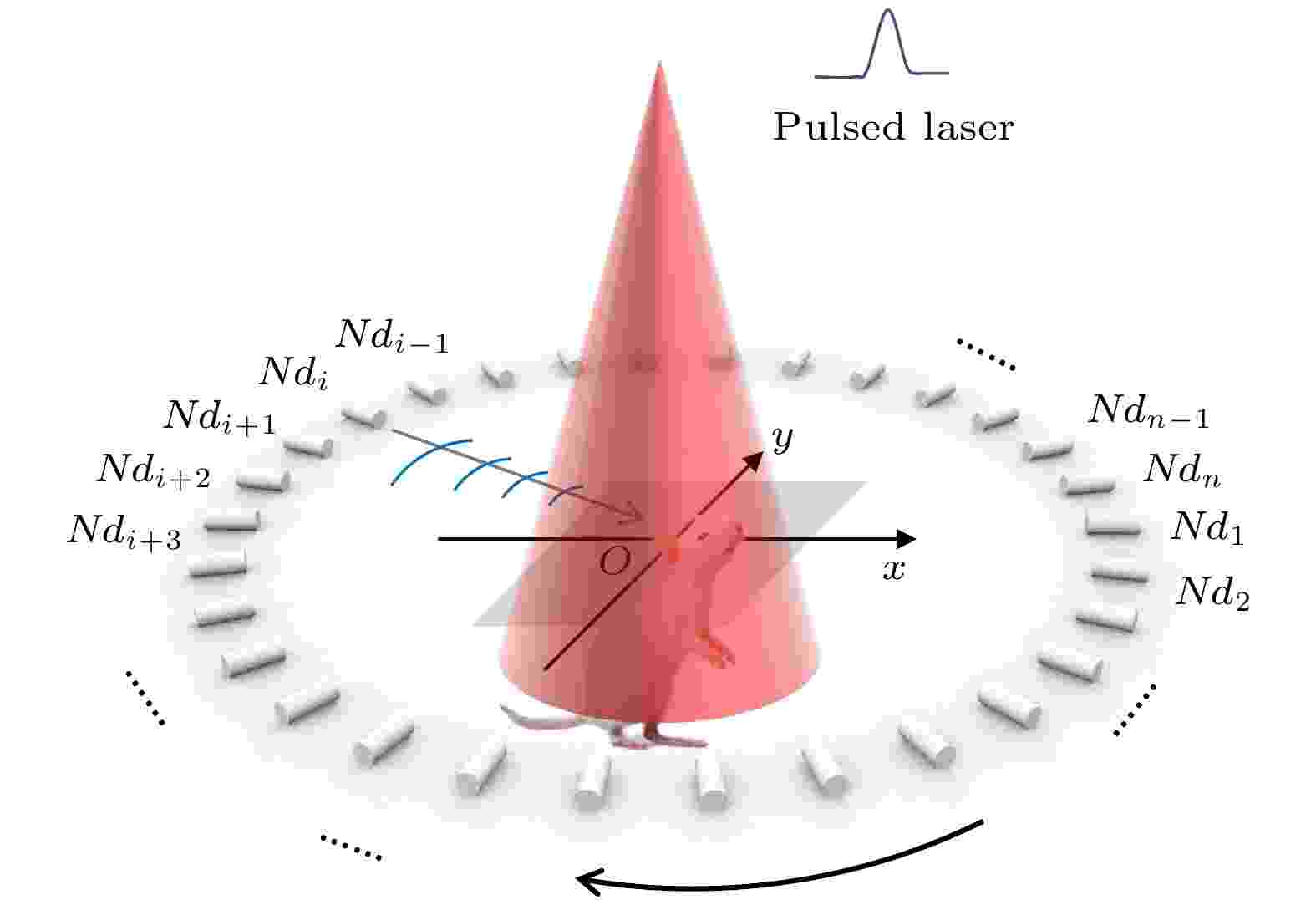
2022, 71 (7): 078102.
doi: 10.7498/aps.71.20212019
Abstract +
Photoacoustic tomography is a rapidly developing imaging technology, which can provide structural and functional information of biological tissues. It can integrate the advantage of high optical contrast from optical imaging with those from high penetration depth from ultrasound imaging. However, the existing back-projection algorithm in photoacoustic tomography equates the ultrasonic transducer scanning around the target to a point detector, which leads to a notable tangential blur in the eccentric imaging regions, and thus seriously degrading the image quality. In this paper, we propose a novel photoacoustic tomography reconstruction algorithm, which employs a focused sound field equivalent model to overcome the sound field distortion caused by the transducer’ finite aperture effect and can quickly and effectively restore the elongated tangential resolution in the eccentric imaging regions. Simulation results show that for the target with a diameter of 5 mm and a distance of 6 mm from the rotation center, the tangential resolution is improved by at least twice. Experimental results show that this method can effectively restore the image tangential blur in the off-center regions, where the tiny structures of complex targets can be detected. This new method provides a valuable alternative to the conventional back-projection method and plays an important guiding role in the design of photoacoustic tomography systems based on circle/sphere scanning.
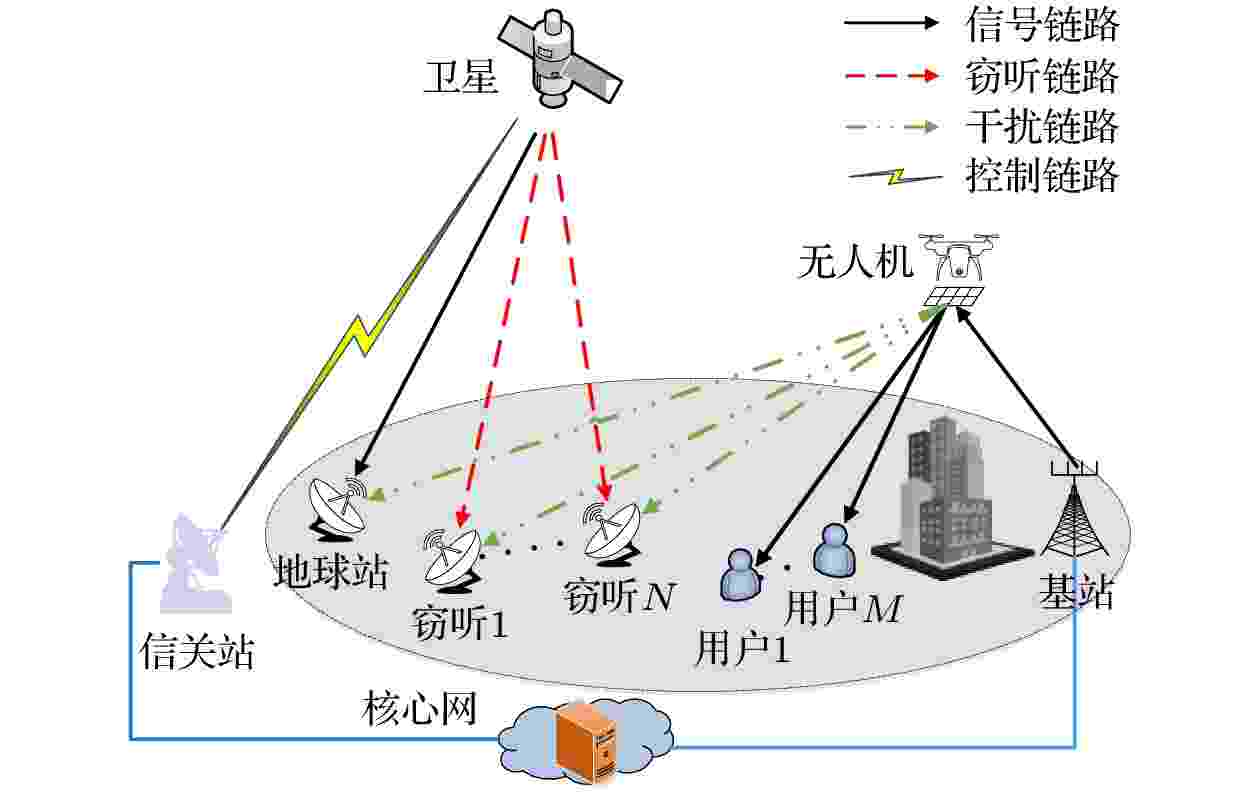
EDITOR'S SUGGESTION
2022, 71 (7): 078401.
doi: 10.7498/aps.71.20212032
Abstract +
For intelligent reflection surface (IRS) assisted satellite-terrestrial integrated network (STIN), a robust secure beamforming method based on the imperfect channel state information (CSI) of eavesdroppers is proposed. First of all, considering that the satellite uses spot beam technology to serve the earth station, while the ground base station (BS) serves multiple ground users through multicast technology, and in the case of frequency spectrum shared between the two networks, a joint optimization problem is formulated to minimize the total transmit power of STIN while satisfying the quality of service constraints of the BS users and the achievable secrecy rate constraints of the earth station. Secondly, in order to solve this non-convex problem, the upper bound and the lower bound of the eavesdroppers’ output signal-to-noise ratio under the condition of imperfect CSI are derived by employing triangle inequality together with Holder inequality. Then, a joint optimization scheme of robust BF and power control based on semi-positive definite programming and penalty function method is proposed to realize the secure and reliable transmission in STIN. Finally, the simulation results verify the effectiveness and superiority of the proposed algorithm.
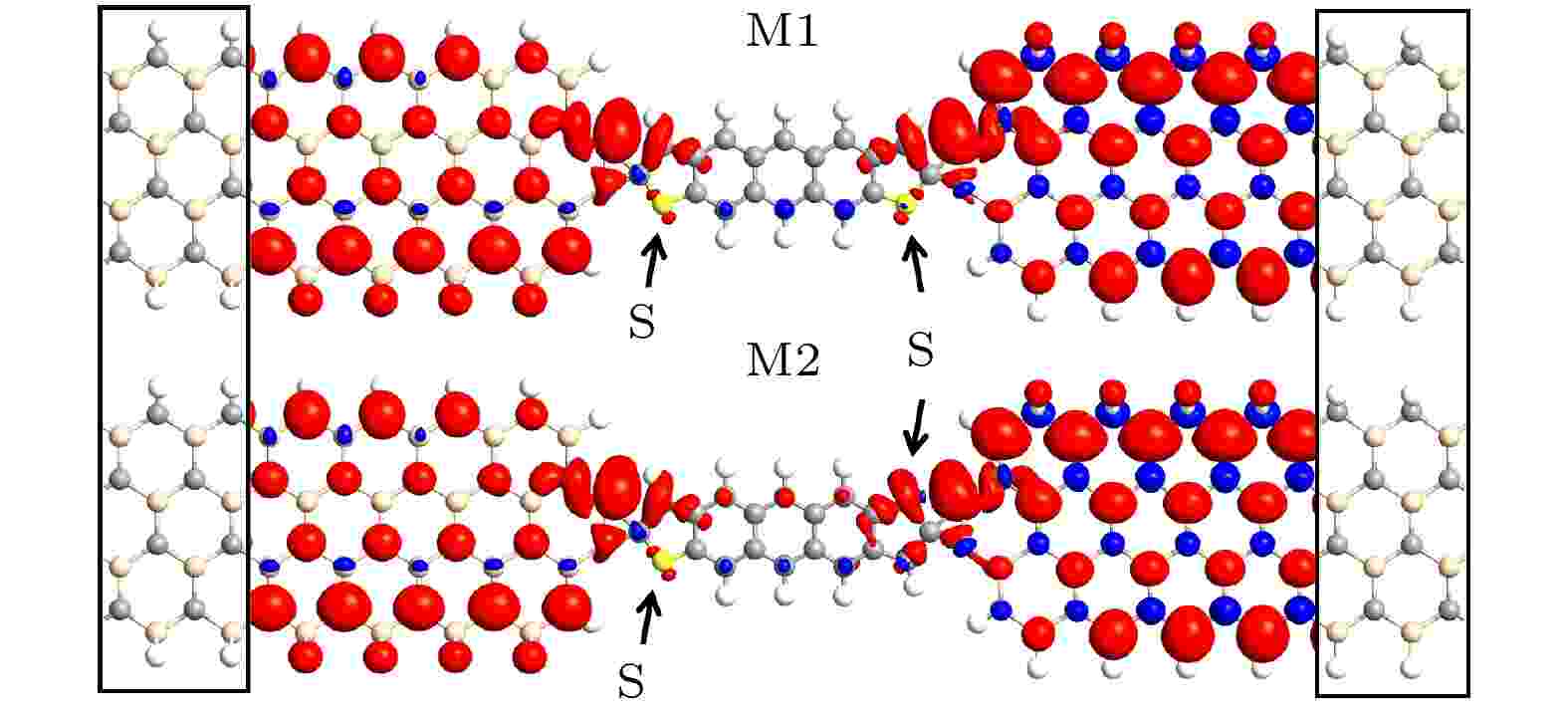
EDITOR'S SUGGESTION
2022, 71 (7): 078501.
doi: 10.7498/aps.71.20212193
Abstract +
Using non-equilibrium Green's function combined with density functional theory, we investigate the spin-resolved transport properties of the zigzag SiC nanoribbon (zSiCNR) connecting anthradithiophene (ADT) molecules and obtain the giant spin current rectification in the presence of a ferromagnetic field. The dual-hydrogenation on edge C atoms or Si atoms can change the initial metallicity of the pristine zSiCNR with the edge mono-hydrogenation into semiconductivity in the presence of a ferromagnetic field. The up-spin current-voltage characteristic of the cis-ADT device and the trans-ADT device can present the significant rectification, and the corresponding giant spin current rectification ratios are close to 1011 and 1010 respectively. In addition, the current-voltage characteristics of two devices both perform a perfect spin filtering behavior in the positive bias region due to the huge difference between the up-spin current value and the down-spin current value. These findings are of great significance in the functional applications of spin-resolved molecular devices in the future.

2022, 71 (7): 078502.
doi: 10.7498/aps.71.20212111
Abstract +
In this paper, the quantum coherence effect in spin-orbit coupled quantum dots system is studied. The average current, shot noise and skewness of the system are calculated by using the full counting statistics approach of the transport system. It is found that the shot noise decreases with the spin-orbit coupling increasing. More importantly, the current, noise and skewness fluctuate periodically with the magnetic flux. And the oscillation period is not affected by the strength of spin-orbit coupling, spin polarization and dynamic coupling asymmetry.
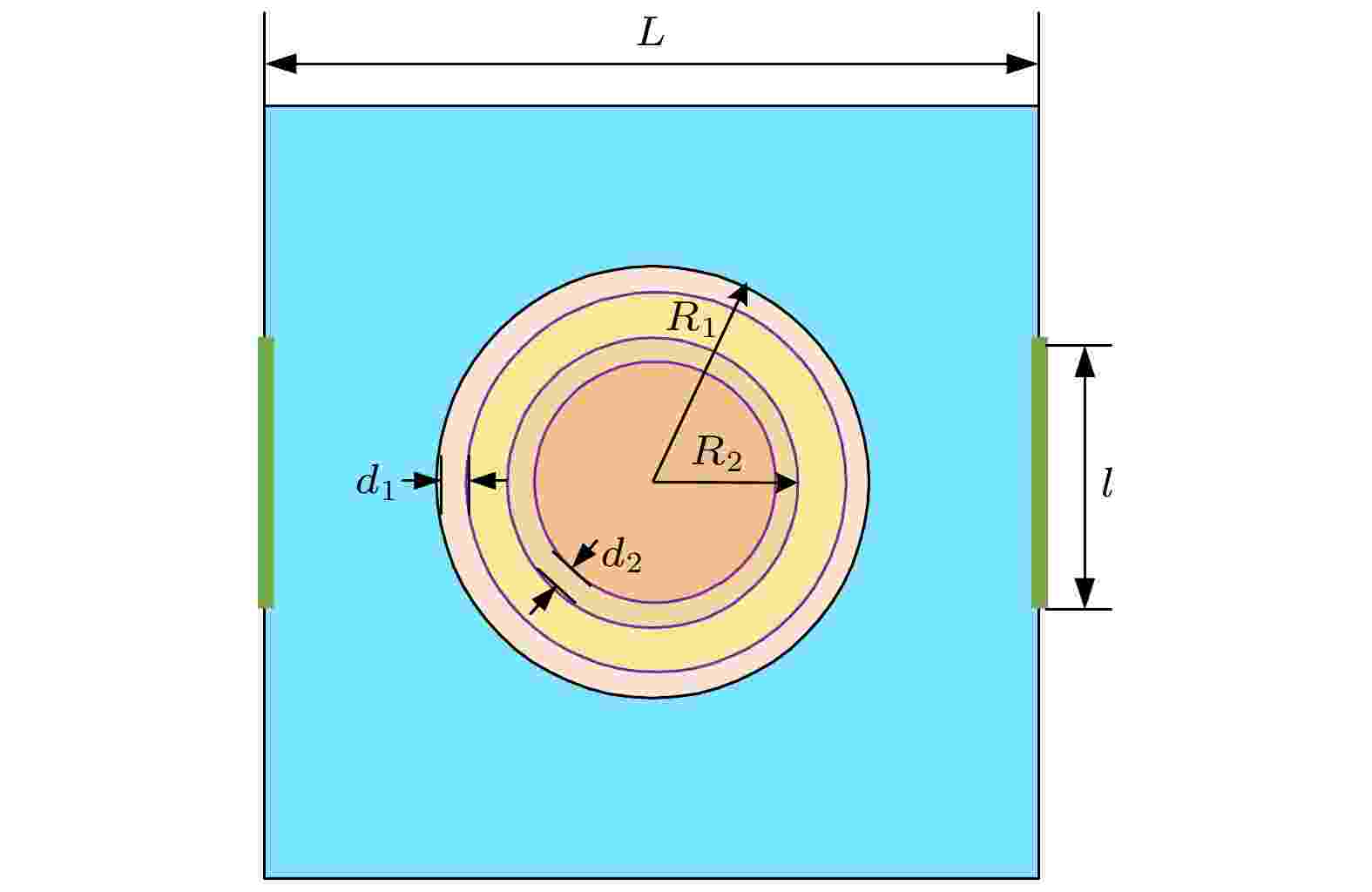
2022, 71 (7): 078701.
doi: 10.7498/aps.71.20211837
Abstract +
Based on bioimpedance spectroscopy technology, a method of automatically identifying the cell suspension concentration is proposed. This method combines multiple linear regression algorithm and bioimpedance spectroscopy technology, which can identify the concentration of cell suspension quickly and accurately. Firstly, a strategy of random distribution of cell locations is proposed to simulate the true existence of cells. Secondly, 2400 groups of normal, cancerous and mixed cell models with different concentrations are generated by numerical simulation and their bioimpedance spectroscopy data are calculated.Thirdly, the multiple linear regression algorithm (MLR), support vector machine (SVM), and gradient boosting regression algorithm (GBR) are used to identify the concentration of cancerous cells. The simulation results show that the MLR is the best regression model for cell suspension concentration identification and its average goodness of fit and mean square error are 0.9997 and 0.0008respectively. Finally, the MLR is applied to the identification of red blood cell suspensions with different concentrations, the experimental results show that the average goodness of fit and mean square error are 0.9998 and 0.0079, respectively, indicating that this method has a greater ability to identify cell suspension concentrations.

EDITOR'S SUGGESTION
2022, 71 (7): 078702.
doi: 10.7498/aps.71.20211632
Abstract +
In the era of The Internet of Things, how to develop a smart sensor system with sustainable power supply, easy deployment and flexible use has become an urgent problem to be solved. Triboelectric nanogenerator (TENG) driven by Maxwell’s Displacement Current can convert mechanical motion into electrical signals, thus it can be used as a self-powered sensor. Sensors based on TENGs have the advantages of simple structure and high instantaneous power density, which provide an important means to build intelligent sensor systems. Meanwhile, machine learning, as a technique with low cost, short development cycle, and strong data processing capabilities and predictive capabilities, is effective in processing the large amount of electrical signals generated by TENG. This article combines the latest research progress of TENG-based sensor systems for signal processing and intelligent recognition by employing machine learning techniques, and outlines the technical features and research status of this research direction from the perspectives of traffic safety, environmental monitor, information security, human-computer interaction and health motion detection. Finally, this article also in-depth discusses the current challenges and future development trends in this field, and analyzes how to improve in the future to open up a broader application space. It is suggested that the integration of machine learning technology and TENG-based sensors will promote the rapid development of intelligent sensor networks in the future.








